5 Reasons Why Your Cruise Control Stopped Working
- Updated: March 15, 2023
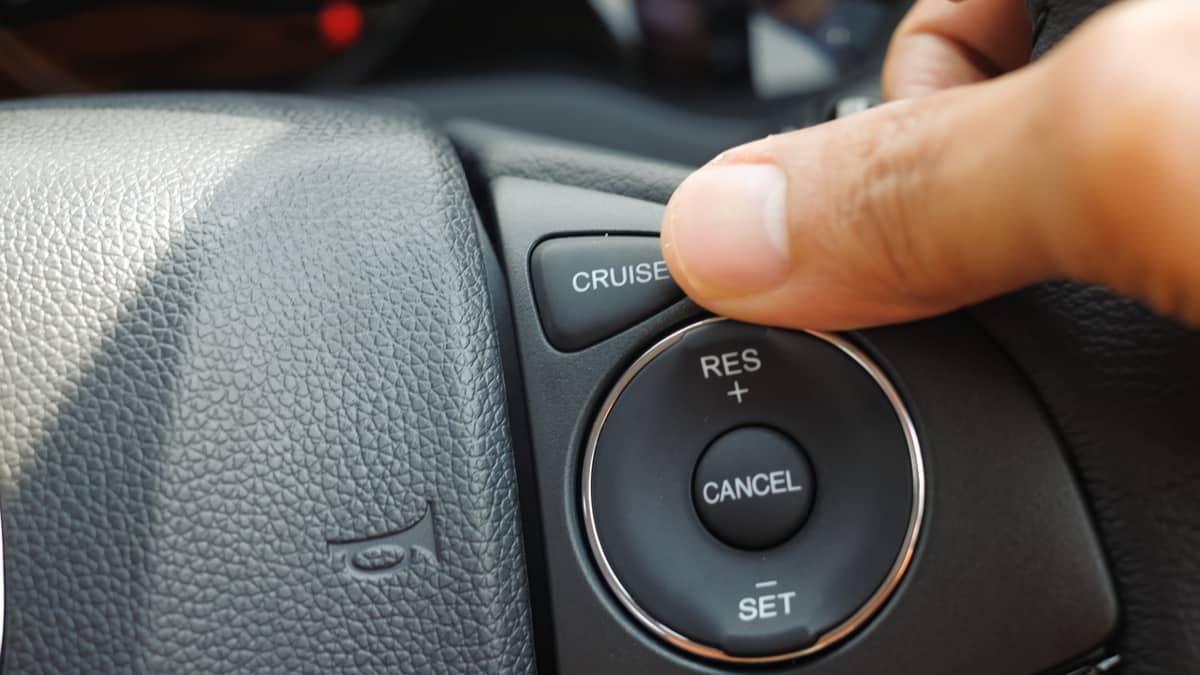
It would be difficult to find a vehicle on the road today without cruise control. This invaluable feature makes driving long distances easier but can also cause trouble when it malfunctions. Understanding the reasons your cruise control stopped working ensures that you can get the problem fixed quickly for a more enjoyable ride.
While this fault can cause issues with the cruise control system itself, there could also be an effect on the acceleration of your vehicle. That’s why you want to have it looked at as soon as you notice a problem. Let’s take a quick look at the reasons your cruise control may have stopped working.

Reasons Why Your Cruise Control Stopped Working
The most common reason a cruise control stops working is due to a blown fuse or a defective brake pedal switch . It can also be caused by issues with the throttle control system or the ABS. In older cruise control systems, it can be caused by a broken vacuum line.
Here is a more detailed list of the possible reasons your cruise control is not working:
1. Blown Fuse
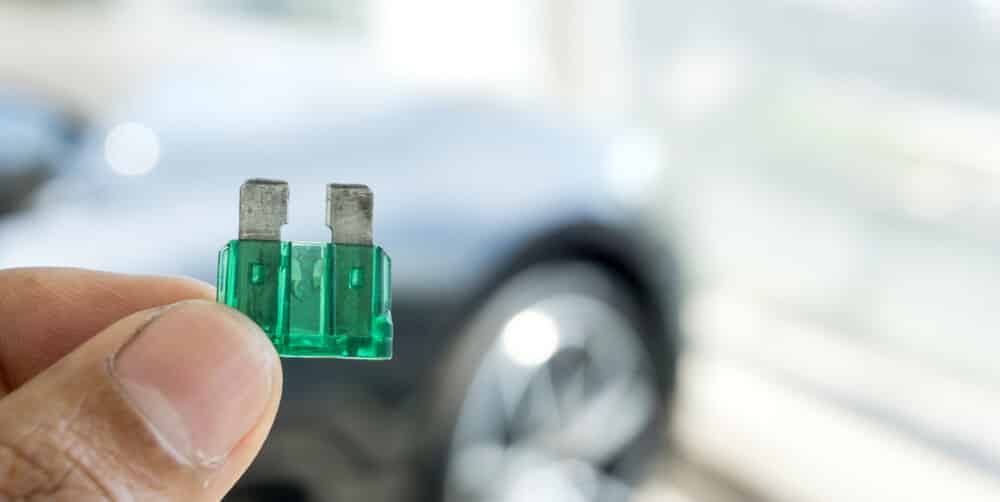
All electrical systems in the vehicle are controlled by fuses. Your cruise control system is attached to a fuse that can blow if there is a short circuit or fault. Without a good fuse, the cruise control system can’t work at all.
Thankfully, it’s not difficult to find and replace a blown fuse. Look in the owner’s manual to find the fuse that corresponds with the cruise control technology.
2. Defective Brake Pedal Switch
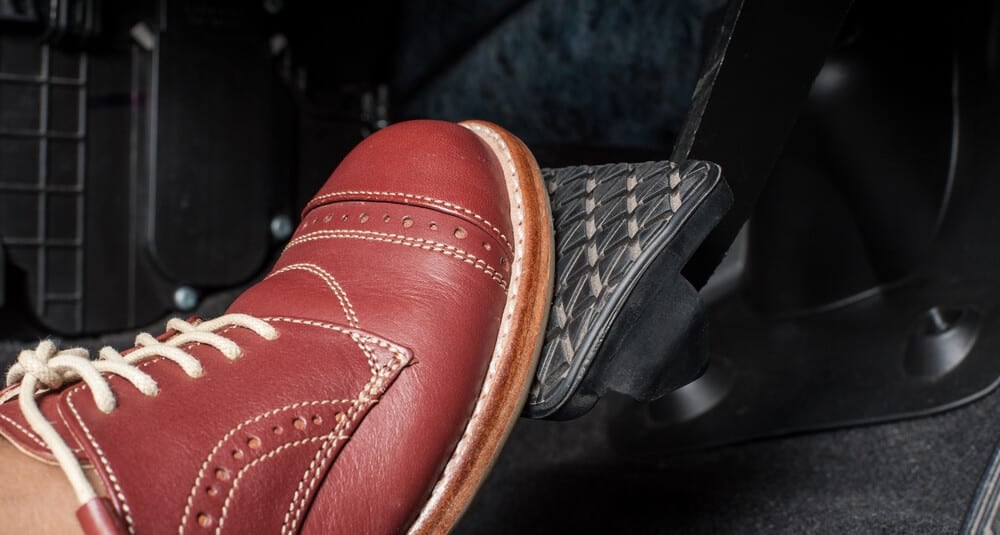
The brake pedal switch is responsible for turning the brake lights on and off based on the pedal position. Cruise control systems are designed to disengage whenever your brake pedal gets pressed.
Because the cruise control is wired into the brake pedal switch, any fault can cause it to stop working. When the brake pedal switch malfunctions, the car believes the brakes are engaged, causing the system to turn off automatically. Not only that, but your car’s brake light might also be stuck on, leaving confused drivers in your wake.
3. Malfunctioning Speed Sensor
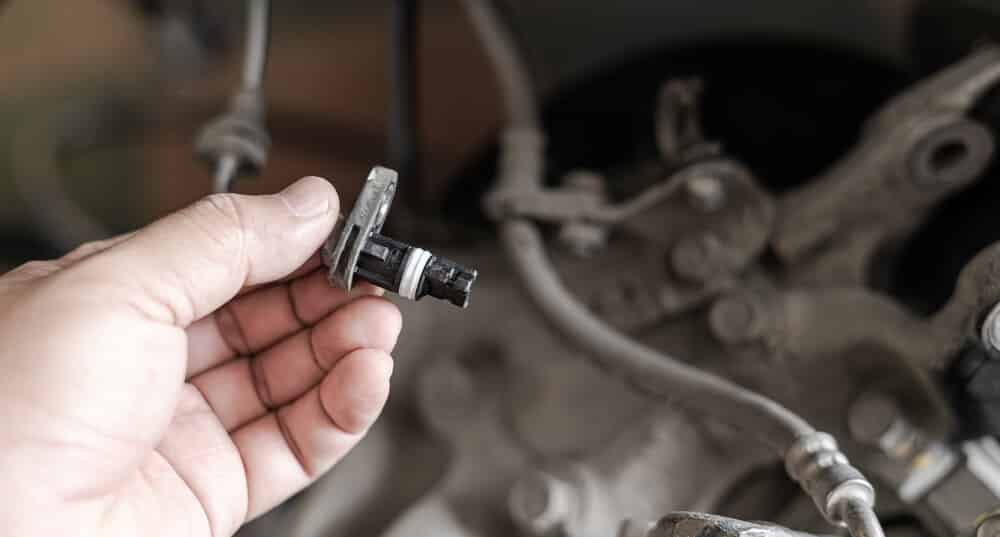
Speed sensors are located on every wheel or differential. The purpose of these sensors is to monitor the speed of the wheels to determine if traction control is needed.
The speed sensors are also part of the cruise control system. When a sensor fails, the cruise control can stop working and the speedometer might act strange as well.
If there is an issue with a speed sensor, it will often show with an ABS warning light or a check engine light on the dashboard.
RELATED: 3 Symptoms of a Bad ABS Wheel Speed Sensor
4. Electrical Issues
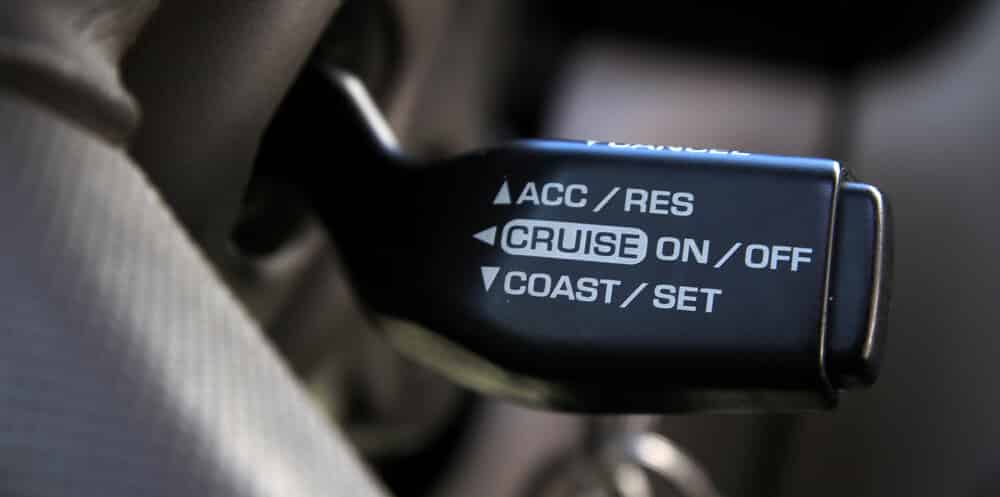
The cruise control system is electronic, with many components working together to make the system operate. If the cruise control fails to work, you want to check the wiring harness and associated connectors for a fault.
You also need to ensure that the voltage source is supplying enough power to the system. Even the smallest fault can cause defects with the cruise control. In many cases, there can be an issue with the cruise control lever or buttons causing the cruise control to not engage.
If your cruise control buttons are located on the steering wheel it could also be caused by a bad clock spring, which is located behind the steering wheel.
Check the system with an OBD2 scanner to look for any trouble codes related to the cruise control.
RELATED: 5 Symptoms of a Broken Clock Spring, Location & Replacement Cost
5. Damaged Vacuum Actuator, Hoses or Cable (Older cruise control)
If you drive an older vehicle with cruise control, you might have an issue with the vacuum actuator or the cable that connects to the throttle. If there has been damage done to the vacuum hoses or the actuator, the cruise control will stop working altogether.
Additionally, the cable linking the actuator to the throttle must be in good shape. If it has been broken, the cruise control will fail.
What is Cruise Control?
Cruise control is a feature that is used when you are traveling at a consistent speed. Cruise control was first introduced for automobiles in the 1950s. However, it took many years before it became a staple in the modern vehicle.
This electrical system allows you to set a predetermined speed and take your foot off of the gas pedal. If you are on a long drive, there is less fatigue because you don’t have to try to maintain your speed. Cruise control can also benefit fuel economy because the vehicle uses less fuel when traveling steadily.
In newer cars, you might be able to find adaptive cruise control , which is a smart technology. Adaptive cruise control allows you to travel at a predetermined speed, but it also helps to maintain a safe distance from the vehicles in front of you with the help of sensors. With conventional cruise control, you need to take over when the car in front of you slows down, but that’s not the case with adaptive cruise control.
There are also vehicles nowadays with not only cruise control, but fully self-driving vehicles . We will most likely see much more of this in the future.
Cruise Control Repair Cost
The cost to repair your cruise control system depends on what caused it to fail. If you need to replace a cruise control or brake switch, you might spend between $125 and $350, including parts and labor. However, the cost to change a fuse is only a few dollars and you can perform the replacement yourself in just a matter of seconds.
On the other hand, when something major fails, such as the actuator, you could be looking at a much higher repair bill. In some vehicles, the cost to replace a cruise control actuator can cost more than $700. These costs rise if you drive a luxury vehicle or one that is difficult to get parts for.
It might not seem immediately important for you to fix the broken cruise control, but this defective system can affect other performance aspects. You could start to notice issues with acceleration or have trouble with the speedometer. To play it safe, it’s always best to have the cruise control repaired as soon as you notice a problem.
Is there a fuse for the cruise control?
Yes. If the cruise control is installed from the factory, you should check your car’s owner’s manual for the fuse location. If it’s an aftermarket cruise control, you’ll need to follow the wires to find the fuse.
Does the brake switch affect the cruise control system?
Yes. The brake switch affects the cruise control system. The brake switch sends a signal to the cruise control system to let it know when the brakes are being applied for the engine to know when it should stop accelerating.
Will the cruise control work if the check engine light is on?
The cruise control function will be disabled when the check engine light is on in most car models, even if the cause of the check engine light is not the cruise control itself. This is mainly due to safety reasons.
Can a vacuum leak affect cruise control?
Older vehicles use vacuum to control the throttle for the cruise control, and in this case a vacuum leak can heavily affect the cruise control. However, modern cruise controls are fully electric and in most cases will not be affected by a vacuum leak if the check engine light is not illuminated.
Although many people may think that the cruise control system is unimportant and not worth spending money to repair, the problem can be caused by a faulty part that will affect the engine’s performance or durability. Therefore, it is best not to ignore the problem if your cruise control is not working without first diagnosing the car properly.
If your cruise control still isn’t working after trying all the tips in this article, it’s probably time to take it in for a professional opinion from a mechanic. It may be a more serious problem that requires replacement parts or repairs. In the meantime, drive safe and enjoy the open road!
Learn more:
- Brake Lights Not Working But Tail Lights Are? (How to Fix)
- Tail Lights Not Working But Brake Lights Are? (How to Fix)
- Brake Lights Stay On? (5 Causes & How to Fix it)
Categories: Electric , Troubleshooting
Related Posts

Latest Posts
- The Best & Worst Years Of Ford Explorer
- Best & Worst Years Of Toyota Corolla
- Best & Worst Years of Toyota RAV4
- When Should Your Child Switch To A Forward-Facing Car Seat?
- The Best & Worst Years Of Toyota Camry
- I Accidentally Put Premium Gas In My Car, What To Do?

- Forum Listing
- Marketplace
- Advanced Search
- Ford Focus Tech Discussions
- General Technical Chat
cruise control lost after aftermarket stereo install
- Add to quote
I drive a 2007 zx4 and just replaced my factory stereo with a aftermarket one.Now my cruise control don't work.I checked all fuses and sensors so i thought i would try stock stereo again and cruise worked! took it out an put my aftermarket one in and now it don't work again dose my cruise control wires pass trough my stock stereo? or is there a work around ? any help would be greatly appreciated i use cruise on a daily bases and am lost without it[mecry][mecry]
A wild Newfoundlander! My only guess would be fuses but you've already checked those. But you asked in the right place I'm sure someone on here has a solution for your issue.
lol thanks, i sure hope so : )
is it possible that no one on this site with cruise replaced there stock stereo ? thought someone would have known something .
I have replaced my stock stero a few times with no problems. The only problem i have with my cruise is that i have to pull my clutch pedal up to engage the switch to say the pedal is all the way up. Once i do that the cruise works as it should.
what type of wiring harness did you use to hook up your stereo ?
i had the exact issue with no cruise control after installing aftermarket radio. I found the wiring diagram and saw that the green/white wire controls the auto volume adjust for the old radio which the new radio does not have. I pulled out the new radio and left the green/white wire disconnected and cruise control now works fine. hope this helps
It works!! thanks so much man i have a 2.5 hour drive twice a week and cruise is a must have.[cheers]
If that clipping the grn/wht. deal works,then this has to be the best Tech forum in the world. That kid might have looked for months before finding the prob. And had a sore rht. leg to go with it.
Another one solved! Thanks H2Out... he's the one to get all the credit for responding to your post.
Awesome! I am really glad that it did the trick!
I'm sure I'll be replacing mine sometime in the next year or so. I'll see what the Metra connector has written on it for that wire. With modern cars, not getting a wiring connector adapter seems like it's always a bad idea. It could be worse, Nissans have this thing about the brake lights not working after an aftermarket install if you don't tie some of the ground wires together.
Info" The "Vehicle Speed Signal" is a common sensor wire to/from the PCM, radio, the 'cruise' stepper module and also the 'roof opening panel unit'. If you install an aftermarket radio, do not connect the white/green wire.
I found the white and green wire that runs through the stereo harness but mine does not go into the stereo, basically goes from glove box area to peddle area, same cruise contol issue though, tried cutting the wire but had no affect, what am I missing?
Hey Caulkins....if it was my unit, I'd try my best to find the glitch. But if push comes to shove, drive it to a stereo install center and give the installer your scamatic. He's probably seen your wiring problem a hundred times and he could clear the problem quickly. Maybe a few bucks or buy him a pizza would work. Hey Maybe he'll like the same music as you. Sometimes it's better to drop back and punt.
I installed a Kenwood BT362U in a 2003 ZX3 with a Blaupunkt deck, and I am having the same issue--loss of cruise control. Unfortunately, however, there is no green/white wire for me to disconnect. I used the Metra VW-9000 (70-1784) harness. The new Kenwood deck's wiring harness only includes the speaker wires, plus the red/yellow/black, audio mute (brown), steering wheel remote (blue/yellow), and power control (blue/white) wires. Is there anything else I can do to restore cruise control functionality?
- ?
- 189.8K members
Top Contributors this Month

Fixing Faulty Cruise Control
Alarmingly, the speedometer needle steadily winds down from 75 mph toward 50. Just as you uncurl your feet and try to accelerate back to traffic speeds, the vehicle downshifts with a lurch and abruptly climbs back to over 80 mph. So you tap the brakes and disengage the cruise control to avoid a conversation with one of the many law enforcement officers lurking behind every other billboard. Toggling the Resume switch settles things down, holding to a legal speed on both the uphill and downhill sections of the interstate. The kids in the back seat have stopped threatening to throw up, too. Then you look in your mirror 20 miles later and see the lights. Red and blue flashing lights. You're doing over 85 mph and, odds are, Smokey isn't going to believe you have the cruise set to 70. Time to find out why your cruise control has a mind of its own.
IT'S NOT A BUG, IT'S A FEATURE Does your cruise control fall out of engagement partway up steep hills? Actually, it will normally drop out if the engine has to work too hard, mainly because after a while there isn't enough vacuum left to pull in the servo after sustained near-wide-open-throttle. You'll just have to put your foot into it. Downshifting helps.
Does your Japanese car not remember the set speed after tollbooths? Unlike most American and European cars, some Toyotas and Hondas are designed not to remember their set speed if the vehicle speed falls below 25 mph, and you're supposed to accelerate the vehicle to your set speed and hit the Set button again. Annoying, but that's the way they were designed.
Do you have to ride the brakes on longer downhills to keep from building up excess speed? That's normal too. The cruise control only has authority to reduce engine speed to idle. It doesn't activate the brakes. Modern cars, in an attempt to improve mileage, have very tall gear ratios, low-friction engine designs, low-rolling-resistance tires and optimized aerodynamics. That long downgrade outside of town may have accelerated your '60s-era Pontiac to only a couple of miles per hour above legal. But, it may well propel your new economy car to blatantly illegal velocities unless you intervene by braking or downshifting.

WHAT'S THAT HISS?: Most common cause of erratic cruise control? Vacuum leaks caused by deteriorated hoses.
SMOOTH AND STEADY Cruise control on your vehicle is a terrific device. It substantially reduces the driver's workload on longer trips, and can save substantial amounts of fuel and expense over the life of the vehicle--until it stops working.
We'll get to the scenario of not holding a steady speed later, but here are a couple of things to check immediately if the cruise control is on strike.
Does the Cruise icon on the dash light up when you turn the switch on? Duh. Check the fuse. You may need to look in the owner's manual to see which one if it's not tagged on the fuse box cover. An aftermarket cruise may have an inline fuse holder in the wiring to the controller.
If there is power to the system, the next check is the brake lights. Brake lights? Yup, cruise controls have a switch to toggle them off when you touch the brake pedal, and many use the same switch as the brake lights. If one of the brake lights has failed, the cruise control thinks the brakes are on all the time and won't come on. Same result if the switch is incorrectly adjusted or broken or jammed. Wait, there's more--if your vehicle has a manual transmission, there's a similar switch on the clutch pedal. You may need to break out a test light or multimeter to verify the function of this array of switches. These switches usually are normally closed switches, and close their contacts when the pedal is depressed. We've seen several cases of intermittent cruise control dropout caused by a brake light switch that was adjusted very tight. Any small bump would jiggle the brake pedal down far enough to toggle the brake lights on for a brief instant--long enough to shut down the cruise. Adjusting the switch to specs (usually so the brake lights come on after the pedal travels 1/2 in.) fixed it.
Once you verify all of these things, it's time to look for more subtle causes. Check underhood. Inspect the linkage between the cruise control actuator and the throttle. It may be as simple as a toilet-tank bead chain or a separate throttle cable with its own actuator cam to the throttle body. Look for disconnected or damaged wiring to the controller or actuator, particu-larly if it's an aftermarket system, which may have been installed by someone with poor mechanical skills.
Another obvious failure point is the vacuum line to the actuator. If it has fallen off, there's no vacuum to the actuator and no force can be applied to the throttle. We'll get ahead of ourselves here and mention that a vacuum line that looks fine may have a subtle leak caused by aging, brittle rubber or connections that don't seal well. A lot of the cruise controls we've seen with issues in regulating their speed correctly are fixed by simply replacing all the vacuum lines between the servo, vacuum reservoir (if there is one) and the intake manifold vacuum supply.
WHOA, NELLIE!: If your brake light switch is incorrectly adjusted, your cruise control may not lock in. A burned-out brake light can do the same.
WHAT'S THIS THING?: The cruise control servo motor could be anywhere in the engine compartment.
CONTROL ISSUE WITH YOUR SERVO There are two main components of the cruise control system: the controller and the servo.
The controller integrates all the inputs and tells the servo how far to actuate the throttle plates. Normally, there is no way you can service this item, so if you trace a problem to the controller, you'll have to buy a new one. A bad controller probably will require a service manual for specific diagnostics. You'll also need a scan tool to access any computer trouble codes to boot.
The servo does the work of moving the throttle blades to speed up the vehicle. Conventional systems are actuated by manifold vacuum. Check the linkage from the servo to the throttle to ensure it's properly hooked up and not binding or sticky. Inside the servo is a diaphragm that moves to pull on the linkage. Some older systems, used on cars or trucks that don't have throttle-position sensors, may have a rod that moves in and out of a magnetic coil to tell the controller the throttle position. There are also two electrically operated solenoid valves. One valve admits vacuum to the diaphragm chamber to add more throttle. The other bleeds air back into the chamber to reduce throttle. Normally, they will never be open at the same time, so if one is sticky or leaking, cruise control operation will be erratic at best. Check for leakage with a handheld vacuum pump. A leaky valve may benefit from a quick shot of silicone spray.
Diesels and some late models may use a servo that is completely electrical. These usually are mounted on the fenderwell or firewall, and are connected to the throttle by a second throttle cable. Other than keeping the cable lubricated and properly adjusted, there's not much to fiddle with. As always, check the shop manual for specifics on your vehicle.
Many late-model cars have throttle plates connected directly to an actuator controlled by the engine management computer. There is no physical connection between your right foot and the throttle blades (Scary, eh?), and there may or may not be a separate cruise control servo or controller.
HOW FAST WAS I GOING, OFFICER? If you still have no engagement, there may be an issue with the cruise control's speed input. Modern cars use information from the ABS's vehicle speed sensor (VSS) because the engine-management computer needs to know road speed. If your Check Engine light is on, the cruise may not work, especially if the VSS is malfunctioning. Older vehicles may use speed information from the speedometer. Aftermarket systems may resort to a ring of magnets clamped to a driveshaft or axle shaft, with a magnetic coil positioned nearby. If the magnets have fallen off or the coil has been smashed by a rock or road debris, there's no speed data for the controller.
URBAN LEGEND The legend has been related to us by all manner of people, including a couple of state police officers. Using the cruise control in rainy or slick conditions will make your car speed up uncontrollably, until you lose control and crash. It's a myth. Engaging the cruise will not make the car speed up. The cruise will attempt to maintain a steady speed. If the wheels lose traction and the car starts to slow down, the cruise will speed up the engine to attempt to accelerate back to the set speed. This will make the drivewheels spin more briskly. The vehicle speed will go slower, regardless of how furiously the wheels spin. If you have a rear-wheel-drive car, the effect is to destabilize the vehicle, and you probably will spin out unless the vehicle regains traction in a reasonable length of time. A front-wheel-drive car with spinning tires will attempt to continue in a more or less straight line--which will make steering control dodgy at best.
Heavy rain or snow makes use of the cruise control inadvisable, but such conditions certainly won't make your car accelerate to ludicrous speeds while you hang on for dear life. If the cruise is engaged and you perceive a loss of traction, the best bet is to tap the brake to disengage the system, and then add just enough throttle to maintain steering until the vehicle slows down to a more appropriate speed.
WHERE'S THIS THING?: Speed sensor may be buried under the dash near speedo head.
SUCK IT UP: The vacuum reservoir provides an added source of vacuum for those long uphill grades.

.css-cuqpxl:before{padding-right:0.3125rem;content:'//';display:inline;} Cars .css-xtujxj:before{padding-left:0.3125rem;content:'//';display:inline;}

The 40 Best Car Toys for Kids in 2024

The 6 Best Car Trash Cans for Collecting Debris

The 5 Best Cordless Power Washers

The 2024 Nissan Rogue Is Making Its Great Escape

Future Cars Worth Waiting For: 2024–2028

10 of the Greatest Corvettes of All Time

The 8 Best USB Car Chargers for a Full Battery
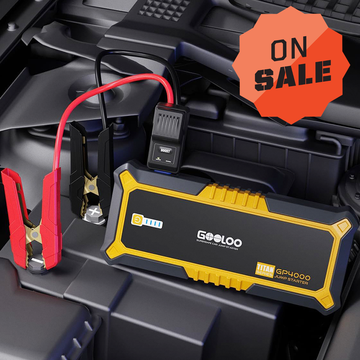
Our Top Tested Jump Starter is 41% Off At Amazon
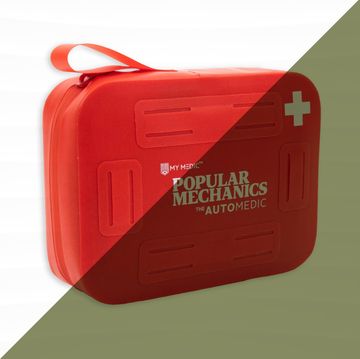
The Best Car Emergency Kits, Just in Case

These Jeep x Igloo Accessories Are Awesome
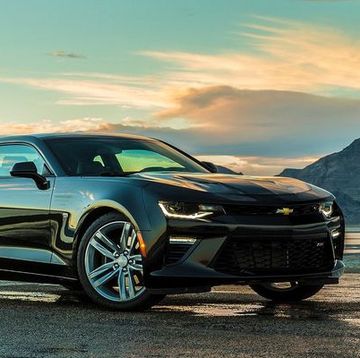
20 Cars That Were Massively Improved by a Redesign

How to Install Aftermarket Cruise Control on Your Car (The Complete Guide)
Installing an aftermarket cruise control can be a great way to add convenience and safety to your vehicle. It’s a relatively simple project that can be completed in a few hours, and it’s a great way to save money on a costly dealer-installed option.
In this article, we’ll walk you through the process of installing an aftermarket cruise control, step-by-step. We’ll cover everything from choosing the right kit for your vehicle to connecting the wires and testing your new cruise control. By the end of this article, you’ll be cruising down the road in comfort and style, thanks to your new aftermarket cruise control.
Cruise control is a convenient feature that allows you to maintain a set speed without having to constantly press on the accelerator pedal. It can be a great way to reduce fatigue on long road trips, and it can also help you save on gas. If your vehicle doesn’t come with factory-installed cruise control, you can easily install an aftermarket cruise control kit.
This guide will walk you through the process of installing an aftermarket cruise control kit on a typical passenger car. The steps may vary slightly depending on the make and model of your vehicle, but the general process is the same.
Tools and Materials
The following tools and materials are required for installing an aftermarket cruise control kit:
- Phillips head screwdriver
- Torx head screwdriver
- Wire cutters
- Electrical tape
Optional tools:
- Dremel tool
Preparation
Before you begin, make sure you have read the owner’s manual for your vehicle and that you understand the installation instructions for the aftermarket cruise control kit.
Park your vehicle in a safe location and set the parking brake.
Disconnect the negative battery terminal to prevent any electrical shorts.
Locate the wiring harness for the cruise control system. This is usually located under the dash or in the engine bay.
Installation
Follow the installation instructions that came with your aftermarket cruise control kit. The general steps are as follows:
1. Remove the old cruise control switch, if necessary. 2. Install the new cruise control switch. 3. Connect the wiring harness for the cruise control system. 4. Test the cruise control system to make sure it is working properly.
Troubleshooting
If the cruise control system is not working properly, there are a few things you can check:
- Make sure the wiring harness is connected properly.
- Check the fuses for the cruise control system.
- Check the throttle position sensor.
- Check the cruise control module.
If you are unable to troubleshoot the problem yourself, you may need to take your vehicle to a qualified mechanic.
Installing an aftermarket cruise control kit is a relatively straightforward process, but it is important to follow the instructions carefully to avoid damaging your vehicle. If you have any questions, consult with a qualified mechanic.
Here are some additional tips for installing an aftermarket cruise control kit:
- Use quality tools and materials. This will help to ensure that the installation is done correctly and that the cruise control system works properly.
- Take your time. Installing an aftermarket cruise control kit can take some time, so don’t rush the process.
- Be careful not to damage any wires or components. The cruise control system is an important part of your vehicle, so be careful not to damage any wires or components during the installation process.
- Test the cruise control system after installation. This will help to ensure that the system is working properly.
By following these tips, you can install an aftermarket cruise control kit on your vehicle with ease.
How To Install Aftermarket Cruise Control?
1. Gather the Required Tools and Materials
Before you begin installing your aftermarket cruise control, you will need to gather the following tools and materials:
- A Phillips head screwdriver
- A flathead screwdriver
- A wire crimper
- A soldering iron and solder
- A set of jumper wires
- A test light
- A wiring diagram for your vehicle
- The installation kit for your aftermarket cruise control
2. Prepare the Vehicle
The first step in installing your aftermarket cruise control is to prepare the vehicle. This involves disconnecting the negative battery terminal and removing the steering wheel.
To disconnect the negative battery terminal, locate the battery in the engine bay. The negative battery terminal is usually located at the bottom of the battery. Use a Phillips head screwdriver to loosen the bolt that secures the negative battery terminal to the battery. Once the bolt is loose, disconnect the negative battery terminal from the battery.
To remove the steering wheel, locate the steering wheel bolt. The steering wheel bolt is usually located in the center of the steering wheel. Use a Phillips head screwdriver to loosen the steering wheel bolt. Once the bolt is loose, you can remove the steering wheel.
The next step is to install the cruise control throttle pedal switch. The cruise control throttle pedal switch is a small switch that is installed on the throttle pedal. It is used to activate and deactivate the cruise control system.
To install the cruise control throttle pedal switch, follow these steps:
1. Locate the cruise control throttle pedal switch. The cruise control throttle pedal switch is usually located on the underside of the throttle pedal. 2. Remove the old cruise control throttle pedal switch. If there is an old cruise control throttle pedal switch installed, you will need to remove it before you can install the new one. To remove the old cruise control throttle pedal switch, use a flathead screwdriver to pry it off of the throttle pedal. 3. Install the new cruise control throttle pedal switch. To install the new cruise control throttle pedal switch, align the switch with the mounting holes on the throttle pedal. Then, use a Phillips head screwdriver to secure the switch in place.
The next step is to install the cruise control accelerator pedal switch. The cruise control accelerator pedal switch is a small switch that is installed on the accelerator pedal. It is used to increase and decrease the speed of the cruise control system.
To install the cruise control accelerator pedal switch, follow these steps:
1. Locate the cruise control accelerator pedal switch. The cruise control accelerator pedal switch is usually located on the underside of the accelerator pedal. 2. Remove the old cruise control accelerator pedal switch. If there is an old cruise control accelerator pedal switch installed, you will need to remove it before you can install the new one. To remove the old cruise control accelerator pedal switch, use a flathead screwdriver to pry it off of the accelerator pedal. 3. Install the new cruise control accelerator pedal switch. To install the new cruise control accelerator pedal switch, align the switch with the mounting holes on the accelerator pedal. Then, use a Phillips head screwdriver to secure the switch in place.
The next step is to install the cruise control control switch. The cruise control control switch is a small switch that is installed on the steering column. It is used to engage and disengage the cruise control system.
To install the cruise control control switch, follow these steps:
1. Locate the cruise control control switch. The cruise control control switch is usually located on the steering column. 2. Remove the old cruise control control switch. If there is an old cruise control control switch installed, you will need to remove it before you can install the new one. To remove the old cruise control control switch, use a Phillips head screwdriver to remove the screws that secure it to the steering column. 3. Install the new cruise control control switch. To install the new cruise control control switch, align the switch with the mounting holes on the steering column. Then, use a Phillips head screwdriver to secure the switch in place.
The next step is to install the cruise control wiring harness. The cruise control wiring harness is a collection of wires that connect the cruise control system to the vehicle’s electrical system.
To install the cruise control wiring harness, follow these steps:
1. Locate the cruise control wiring harness. The cruise control wiring harness is usually located in the engine bay. 2. Connect the cruise control wiring harness
Q: What is an aftermarket cruise control?
A: An aftermarket cruise control is a device that can be installed in a vehicle that does not have factory-installed cruise control. It allows the driver to set a desired speed and the vehicle will maintain that speed without the driver having to keep their foot on the accelerator.
Q: What are the benefits of installing an aftermarket cruise control?
A: There are several benefits to installing an aftermarket cruise control, including:
- Increased comfort: Cruise control allows the driver to relax and enjoy the ride, without having to constantly adjust the accelerator.
- Reduced fatigue: By taking the stress of maintaining a constant speed off the driver, cruise control can help reduce fatigue on long road trips.
- Improved safety: Cruise control can help the driver maintain a consistent speed, which can reduce the risk of accidents.
Q: What are the different types of aftermarket cruise controls?
A There are two main types of aftermarket cruise controls:
- Proportional cruise control: This type of cruise control uses a potentiometer to measure the throttle position and adjust the engine speed accordingly.
- Speed-sensing cruise control: This type of cruise control uses a speed sensor to measure the vehicle’s speed and adjust the engine speed accordingly.
Q: How do I install an aftermarket cruise control?
Installing an aftermarket cruise control can be a relatively simple task, but it is important to follow the instructions carefully. The installation process will vary depending on the make and model of your vehicle, but the following steps are generally applicable:
1. Locate the cruise control wiring harness. The cruise control wiring harness is typically located under the dash or in the engine compartment. 2. Disconnect the battery negative terminal. This will prevent any electrical shorts during the installation process. 3. Install the cruise control control module. The control module is typically mounted to the firewall or under the dash. 4. Connect the cruise control wiring harness. The wiring harness will need to be connected to the vehicle’s electrical system. 5. Test the cruise control. Once the installation is complete, test the cruise control to make sure it is working properly.
Q: What are some common problems with aftermarket cruise controls?
Some common problems with aftermarket cruise controls include:
- Inaccurate speed control: The cruise control may not maintain a constant speed, or it may speed up or slow down suddenly.
- Erratic operation: The cruise control may engage or disengage suddenly, or it may not respond to the driver’s inputs.
- Failure to disengage: The cruise control may not disengage when the driver presses the brake pedal.
If you experience any of these problems, it is important to have the cruise control serviced or repaired.
Q: How much does it cost to install an aftermarket cruise control?
The cost of installing an aftermarket cruise control will vary depending on the make and model of your vehicle, as well as the type of cruise control you choose. The average cost of installation is between $100 and $200.
Q: Where can I buy an aftermarket cruise control?
Aftermarket cruise controls can be purchased from a variety of sources, including online retailers, auto parts stores, and car dealerships.
Aftermarket cruise control is a great way to add convenience and safety to your vehicle. It can help you to maintain a steady speed on long road trips, and it can also reduce driver fatigue. Installing aftermarket cruise control is a relatively simple process, but it is important to follow the instructions carefully. In this article, we have outlined the steps involved in installing aftermarket cruise control. We have also provided tips on how to choose the right system for your vehicle and how to troubleshoot any problems that you may encounter. By following these steps, you can install aftermarket cruise control on your vehicle and enjoy all of the benefits that it has to offer.
Author Profile

Latest entries
- January 19, 2024 Hiking How to Lace Hiking Boots for a Perfect Fit
- January 19, 2024 Camping How to Dispose of Camping Propane Tanks the Right Way
- January 19, 2024 Traveling Information Is Buffalo Still Under Travel Ban? (Updated for 2023)
- January 19, 2024 Cruise/Cruising Which Carnival Cruise Is Best for Families?
- Why is my Cruise Control not Working? [14 reasons]
14 Reasons Why your Cruise Control may NOT Be Working
The reason for your cruise control not working could be as simple as a blown fuse to really complex electrical problems. Defective switches, sensors, and even “check engine” light, all could contribute to this problem.
If you like to travel and own a car fitted with cruise control, you know how comfortable it can be to maintain a constant speed! When a cruise control system gets damaged, it is just as annoying as it is dangerous.
Cruise control is connected to several components of the car, and when it fails it can mean that something could be wrong with the CC itself. It could also be a signal that something wrong is happening with any other component of the car.
Why is my cruise control not working?
In this article, I am going to show you the main reasons why your cruise control may not be working (from the simplest to the more complex ones):
Reason #1. Bad or blown fuse
The cruise control’s circuit (like many other electronic components of your car), is protected by a fuse that will blow to protect the system from short circuits and overloads. If your vehicle’s cruise control fuse is blown, the system will stop working.
You can replace the fuse with a new one of the correct amperage, according to your vehicle’s owner manual. If the new fuse doesn’t blow again, everything will be ok; if the fuse blows again, you have to keep searching for what is making that fuse blow.
Reason #2. Burnt brake lamp
Some cruise control systems are disabled when the brake lamp is blown. Check your brake lights. If you find a burnt brake light, just replace it and test the system again.
Reason #3. Defective brake light switch
A defective pedal switch can also make your cruise control stop working. Remember that all cruise control systems are automatically disengaged as soon as the brake pedal is pressed down.
If the cruise control didn’t stop working when a fault in the brake light or brake pedal switch is detected, it could be dangerous; that’s why the CC control unit constantly monitors the status of this switch.
Reason #4. Clutch pedal switch deactivation (for manual transmission vehicles)
Cruise control is deactivated when the clutch is pressed by the driver in manual transmission cars. The CC control unit monitors this switch as it does the brake light switch.
Reason #5. The vehicle speed sensor is not working
A vehicle’s cruise control needs to be able to determine the vehicle’s actual speed. This enables the system to determine how much throttle needs to be applied in order to keep a certain speed, among other things.
The speedometer speed sensor is not always the sensor used by cruise control. Some systems rely on the ABS speed sensors, others do an average and some have a dedicated speed sensor.
If the system can’t detect the vehicle’s speed or detects a problem with the speed sensor, it will stop working.
Reason #6. Faulty throttle body or accelerator pedal
In modern engines, the throttle body is driven electronically by the engine control unit (ECU), and the accelerator pedal works like a potentiometer. The processor managing the cruise control system will act as the accelerator pedal, sending more or less voltage to the throttle body to open or close the throttle body’s butterfly valve.
If there is a problem with your vehicle’s throttle body, your cruise control won’t work.
Reason #7. Check Engine light is “ON”
If your vehicle instrument panel has the “Check Engine Light” ON and the fault stored in the ECU’s memory is related to some component vital for the cruise control system, you will not be able to use your cruise control until you have fixed that problem.
Reason #8. Faulty steering wheel’s spiral cable/clock spring
The spiral cable connects all the switches from the steering wheel (in case your steering wheel has switches) to their respective modules. This includes the connection of the driver’s airbag.
These wires (also called clock springs) are prone to get cut. A faulty spiral cable may have an open circuit making it unable to reach the vehicle’s cruise control module (CCM).
Reason #9. Bad Cruise Control Switch
Your vehicle’s cruise control switches have internal contacts that wear out. If that happens, the switches won’t be able to contact the CCM.
Depending on which buttons are faulty, your whole cruise control can stop working or just some functions won’t work.
Reason #10. Electrical problems with different modules and wiring
Modern cruise control systems use electrical and electronic components, and they are connected to other modules and systems of the vehicle. Some of these systems are the ECU, ABS, and/or Stability Control Systems like ESP.
The CCM makes a check of these systems once the key is switched to ON, and if some of these components are not working in optimal conditions, the CCM won’t engage. If none of the above items seem to be the problem, the vehicle needs to be taken to a professional who can perform a full scan of all the components, check that all the voltages, wiring harnesses, and connectors are ok.
The professional is going to detect if there are any connection problems between modules and will be able to find the reason why the cruise control is not working.
Reason #11. Dirty or faulty camera or sensor (only for vehicles fitted with adaptive cruise controls)
Newer vehicles have adaptive cruise control systems. These devices not only keep a fixed speed by the driver; they also can detect other vehicles ahead and behind and are able to keep a safe fixed distance to avoid collisions.
Some of these new systems have laser sensors while others have cameras to calculate the right distance to follow considering the vehicle’s speed and acceleration. Any problem with the sensors will prevent adaptive cruise control from working.
Problems with older cruise control systems
Before electronic injection and electronic throttle bodies, some cars had the cruise control function. In fact, the first cruise controls were introduced in the early 1950s.
These electromechanical cruise controls are pretty simple. They have a vacuum actuator connected to the throttle linkage that opens and closes the throttle to maintain the vehicle’s speed.
In early injection cars, the throttle linkage was replaced by a cable. Some common faults of these old cruise control systems are:
- A faulty vacuum actuator. Vacuum actuators have a diaphragm inside that can break. Any vacuum leak will lead to failure.
- Faulty vacuum control solenoid. It can prevent the actuator from operating normally.
- Broken throttle cable. If the throttle cable or linkage is broken, it needs to be replaced.
I hope you enjoyed my guide to cruise control problems. Even though it doesn’t explain how to fix your cruise control, it gives you an idea of where to start looking if you are going to do it yourself.
Now you will have an idea about how the system works and what are the possible reasons why it’s failing (in case you have to take your vehicle to a shop to be repaired).
Attention! This article is for informational purposes ONLY and is NOT a replacement for professional advice! ALWAYS consult your local specialist for an appropriate solution to your problem. All statements, prices, contact information, recommendations, and reviews contained herein came from sources that we believe to be reliable, but the accuracy or completeness thereof is not guaranteed. Please contact the service provider for complete details and updates.
I always Know and admit that even though I went to school for ABR grad. In 1994 3.36gpa still have go go back to school for upgrades due to vehicle advancement but I still learned alot although I am dealing with an 05 f150 stx which has more recalls then a auto parts store where the employees don’t know a inerta. Switch from an ignition switch ,thanks for the information
Leave a Reply Cancel reply
Your email address will not be published. Required fields are marked *
Save my name, email, and website in this browser for the next time I comment.
Privacy Overview
Automated page speed optimizations for fast site performance

- Concept Cars
- Movies & Television
- Air Conditioning & Heat
- Brakes & Brake Parts
- Engines & Components
- Lighting & Lamps
- Suspension & Steering
- Wheels & Tires
- Sports Cars
- Motorsports
- Motorcycles
- ATVs & UTVs
- Shop Motors
Adding Aftermarket Cruise Control Is Easier Than You Think
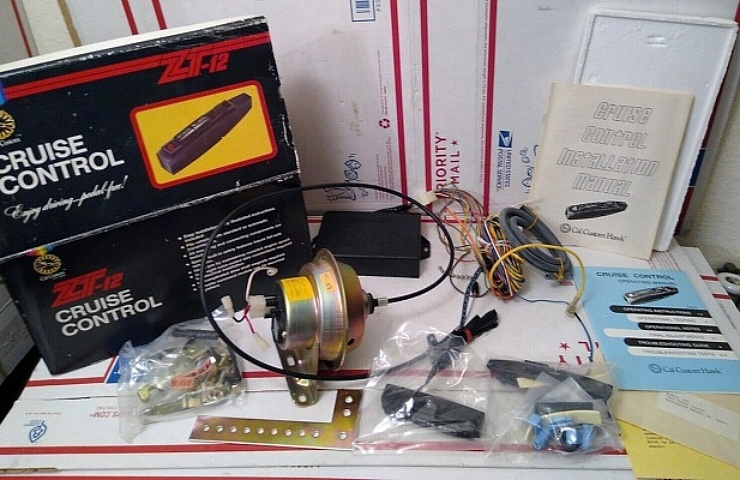
If you’re an auto enthusiast, you probably take pleasure in the response from stomping the gas pedal. But c’mon folks, we can also admit that a long highway trip is more pleasant with cruise control. Set a constant speed, lift your foot, and let the car glide down the pike.
But what if your vehicle didn’t come with cruise control? No worries. There are plenty of aftermarket kits to add cruise control to your ride. If you have some basic skills, this DIY upgrade can happen in an hour or two.
Shop now for cruise control kits
eBay Motors offers hundreds of aftermarket cruise control kits and related parts. But before you make a purchase, answer these questions:
- Is the aftermarket cruise control kit compatible with your car?
- Are your brake lights working properly?
- Are you comfortable working on your car’s electrical wiring and throttle settings?
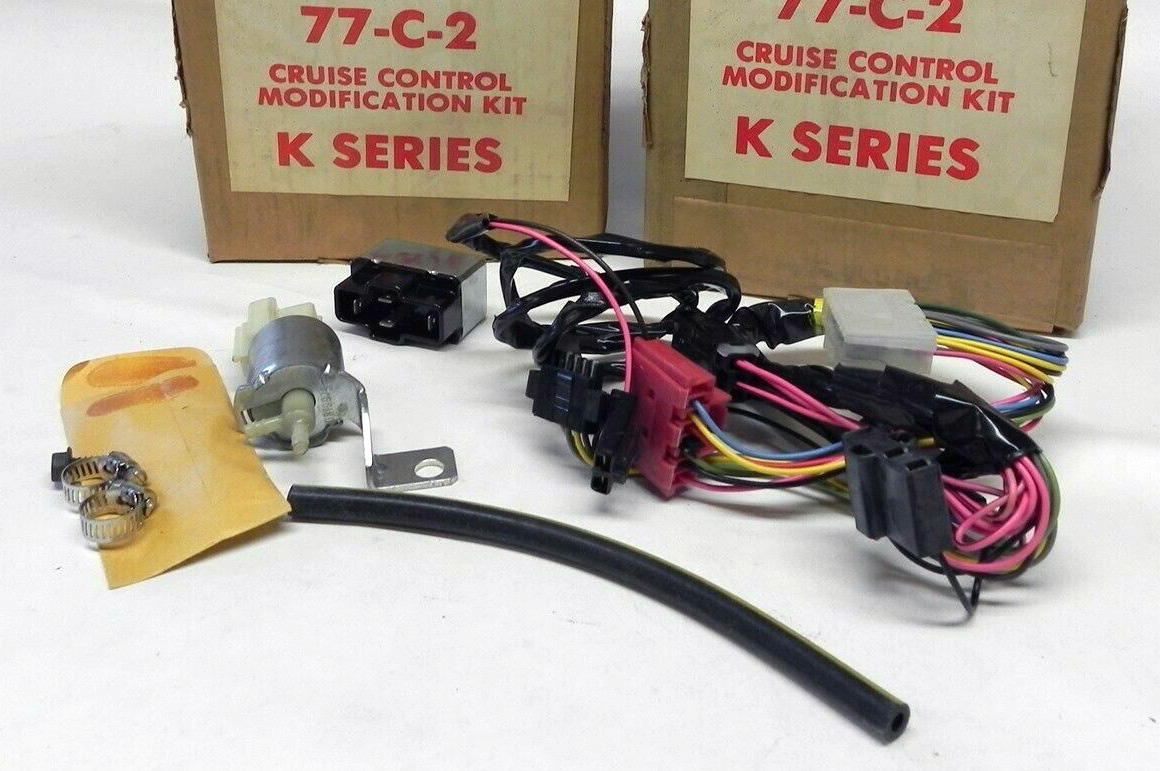
An eBay search could turn up a usable original New Old Stock (NOS) kit from the carmaker.
If you answered yes (or you’re willing to learn), then cruise control might be coming soon to your vehicle. And if you think this is beyond your skill set, most auto shops can install a kit for you.
Watch the installation of a Rostra cruise control system in a Hyundai Accent:
Tips for Installing Aftermarket Cruise Control
Here’s a quick overview of the primary components. Kits will provide detailed instructions. First things first: safety! Before starting to work on your car’s electrical system, disconnect the battery.
Wiring harness: Most kits come with a wiring harness, complete with colored wires. Instructions will guide you to wire the hot and cold sides of your brake switch. Other wires connect to the ignition “run” contact and ground. A significant step is to splice into a Vehicle Speed Signal (VSS) wire. Most cars of the past 20 years have a VSS. If not, there are adapter kits to create a signal generator or use a pick-up coil to create a similar signal.
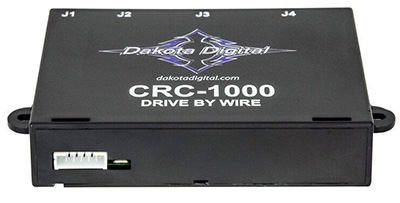
Kits often integrate with a drive-by-wire system.
Throttle cable: Attach the cable provided in the kit to the existing throttle plate of your car’s engine. Most kits also have sufficient adapters and linkages to fit a variety of throttles. Verify that the cable is not binding on anything under the hood. Aftermarket cruise control kits can also accommodate newer engines that drive by wire—and don’t have an old-school cable to control engine RPMs.
Actuator: The actuator is a mechanical box that controls your car’s cruising function. It is mounted in the engine compartment and has connectors for the wiring harness and throttle cable. It also has several DIP (dual inline package) switches. Moving specific DIP switches up or down allows the cruise control unit to communicate with essential vehicle functions. The settings include the number of engine cylinders, the type of speed sensor, and its output. To save the new settings, power off the actuator and then restore power.
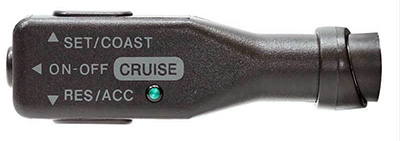
A cruise control switch integrates with the turn signal lever.
Driver switch: Many cruise control systems offer a switch on your turn signal stalk that looks like a factory installation. Others provide buttons on a dash-mounted plate. We recommend the turn signal switch, which has a cleaner look and helps keep your eyes on the road.
Testing Required
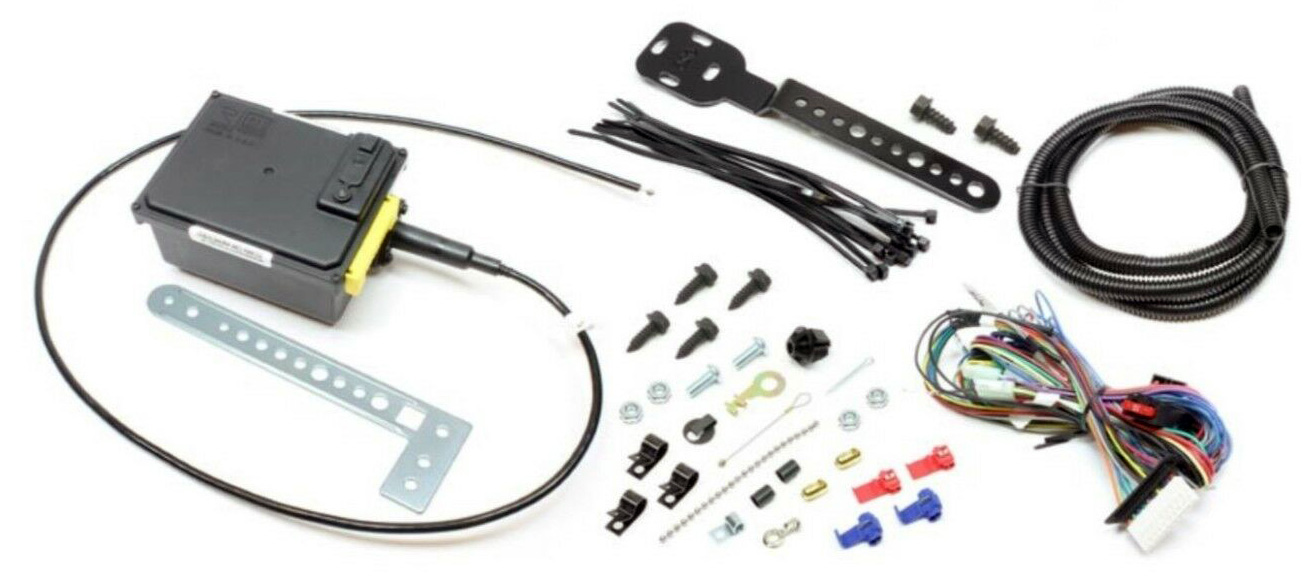
Kits are designed for specifically vehicles and provide all the necessary gear.
After completing all the steps stipulated in the kit instructions:
- Re-connect the battery.
- Check to verify that your brake lights still function correctly.
- Start the engine, leave it in Park, and mildly depress the gas pedal.
- Make sure that it returns to a slow idle setting.
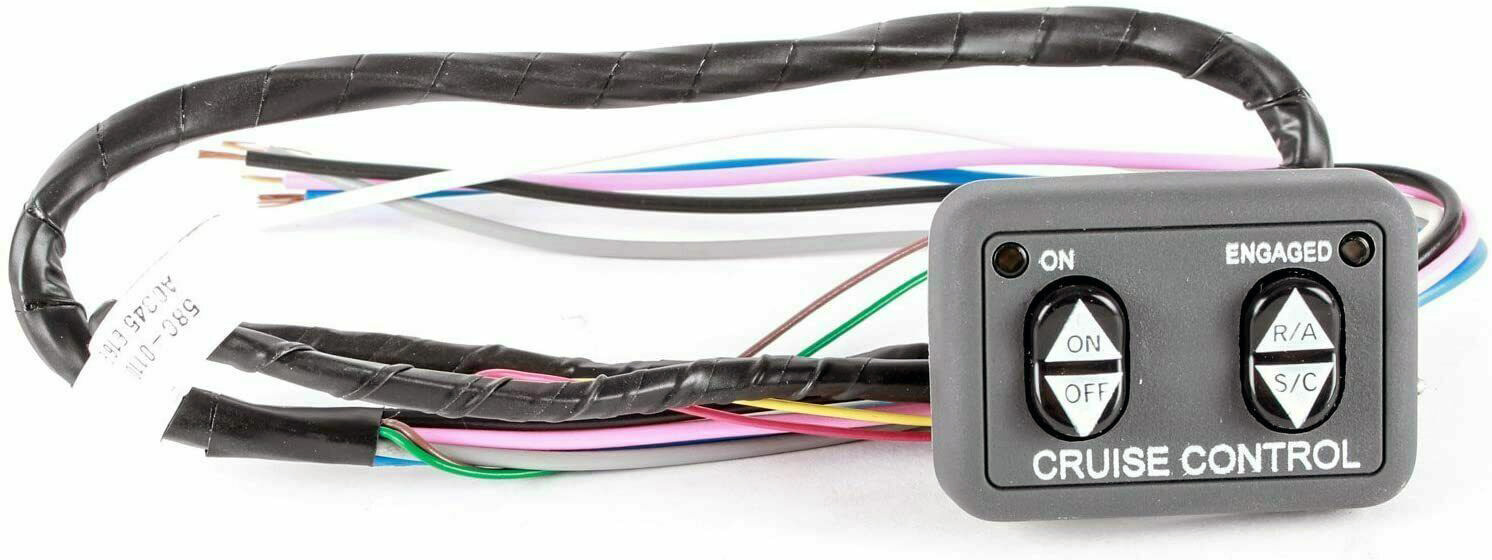
A dash-mounted controller activates cruise control.
If the brake lights and idle are working as expected, it’s time to take the car to a deserted parking lot. Next, accelerate to a moderate speed, set the cruise control, and see if the speed is maintained with your foot off the gas pedal. Finally, touch the brake pedal and verify that the cruise control disengages.
If everything is working, your car should be ready for further testing on the highway. It’s a good idea to take several short, local highway trips to verify a successful installation before heading off on a long interstate journey.
While aftermarket cruise control is available to hands-on DIYers, that’s not yet mainstream for so-called adaptive cruise control. But automated road sensing and even lane-keeping is probably not far off. For example, an aftermarket self-driving kit from Comma.ai is usually available on eBay .
About the Author
Mark C. Bach has oil in his veins and remembers feeler gauges and brake springs. He has a love for all things that move, especially old-school muscle cars. Bach writes for a variety of outlets, including Chevy Classics and FuelCurve.com, and maintains Route66pubco.com.
Recent Posts

That’s a Wrap on From the Collection: Ken Block
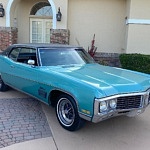
A ‘70 Buick Wildcat Muscle Car With Room for Six
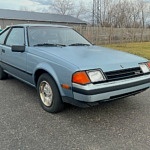
The Underappreciated and Accessible 1983 Toyota Celica

- Comment Policy
- User Agreement
© Copyright 2024. All rights reserved.
- Car Parts & Accessories
- Car Interior
- Steering & Suspension
- Ignition system
- All Season tires
- Summer tires
- Winter tires
- Goodyear tires
- Michelin tires
- Pirellis tires
- Cooper tires
- Brake Disc Rotors
- Calipers & Brackets
- Brake Component Kits
- Master Cylinders
- Brake Boosters
- Car & Truck Lighting
- LED Car & Truck Headlights
- Headlights for Jeep Grand Cherokee
- Headlights for Ford Ranger
- Headlights for Ford F-150
- Headlights for Nissan Sentra
- Headlights for Mazda 3

7 Reasons Why Cruise Control is Not Working
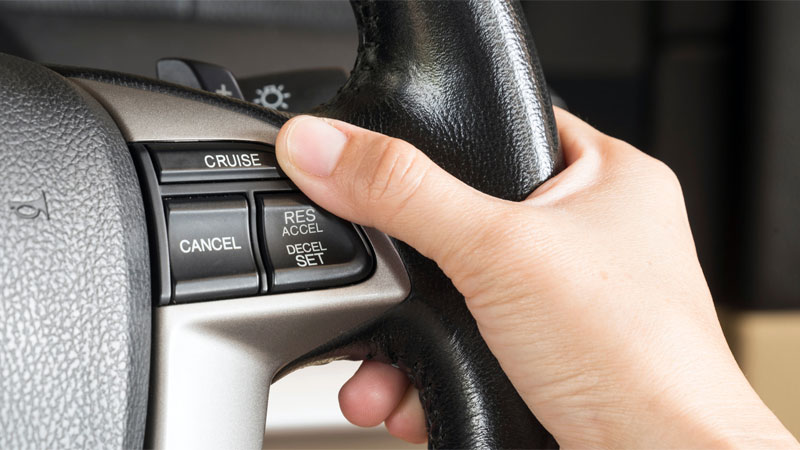
Cruise control has been around since the late 1950s. There was a time when you could only find this convenient feature in a few model vehicles. Nowadays, it seems like virtually every model vehicle on the road has a cruise control feature.
Cruise control not engaging seems like a trivial issue, but the inability to activate this convenient feature can certainly dampen any road trip. While cruise control failures “rarely” pose safety risks, determining the root cause is necessary to restore its use. Let’s look at the common causes of cruise control malfunction.
Table of Contents
Cruise Control Problems (Accelerating or Maintaining Speed)
If your cruise control feature malfunctions and stops working altogether, you may not think it’s an immediate concern. You’ll probably figure that you just can’t use cruise control anymore until you get the problem fixed.
However, the problem with your cruise control might be related to an acceleration issue too. In fact, there are components of cruise control which can have an adverse effect on the acceleration if those components are bad. That is why you need to be aware of what causes cruise control issues.
Common Causes of Cruise Control Not Working
There are several possible causes of cruise control not working. Below are the top 6 most common causes. Check each of these areas and see if they’re the cause of your cruise control issue. In many cases, the remedy to the problem is not that complicated or expensive.
1) Cruise Control Switch

The cruise control switch is what you use to set your cruising speed. This information is transmitted to the engine control unit and cruise control module in order to sustain the acceleration speed.
If the contacts inside the cruise control switch were to wear out, then the module and unit might not receive the necessary speed information it needs to keep the acceleration going. In response, the system will deactivate entirely and cancel the current cruise acceleration set.
2) Brake Light Switch
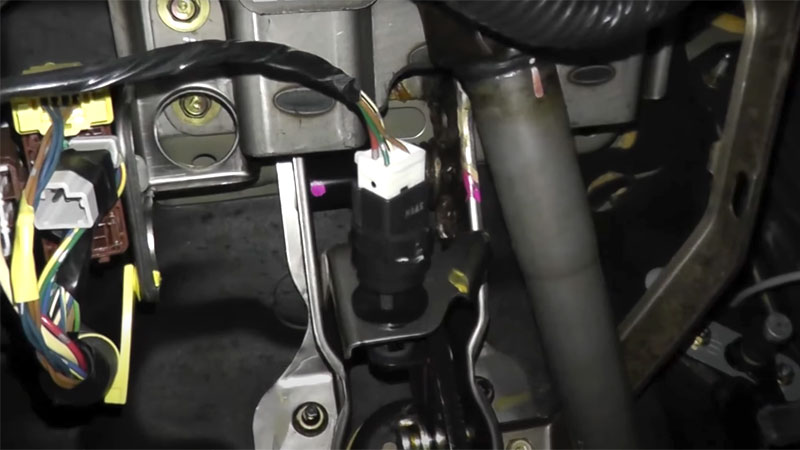
Normally, you press the brake pedal to turn off cruise control. The brake light switch must be detected by the cruise control system for this to happen.
If it cannot detect the switch, then cruise control will disable itself automatically until the brake light switch issue is fixed.
A faulty brake light switch can also cause your brake lights to stay on .
3) Blown Fuse
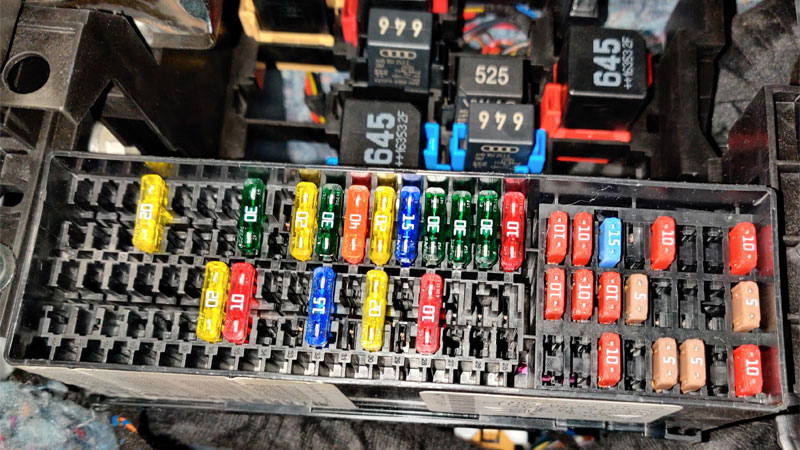
The electrical components of the cruise control system are protected by fuses. Like inside your house, it is possible to blow a fuse. This will cause the cruise control system to turn off until the fuse is replaced.
4) Check Engine Warning Light
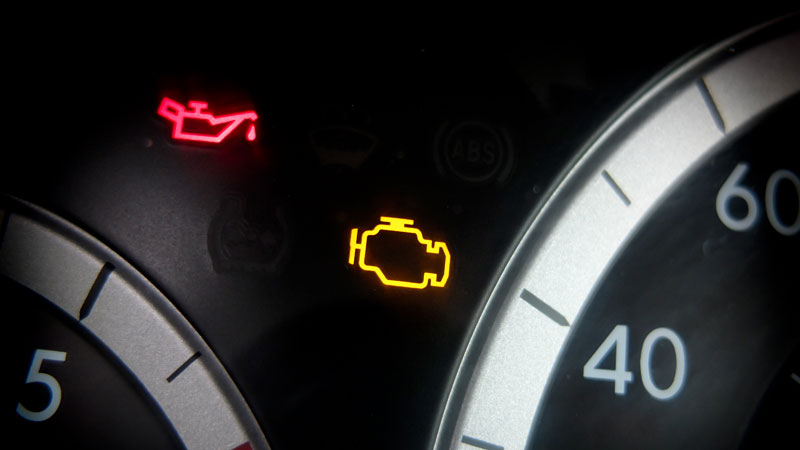
If the check engine warning light comes on, it usually means there is a problem with your transmission or engine. Once the engine control unit detects this problem, it may disable your cruise control system in response as a safety precaution.
Until you fix the engine issue, the cruise control will stay disabled.
5) Vehicle Speed Sensor
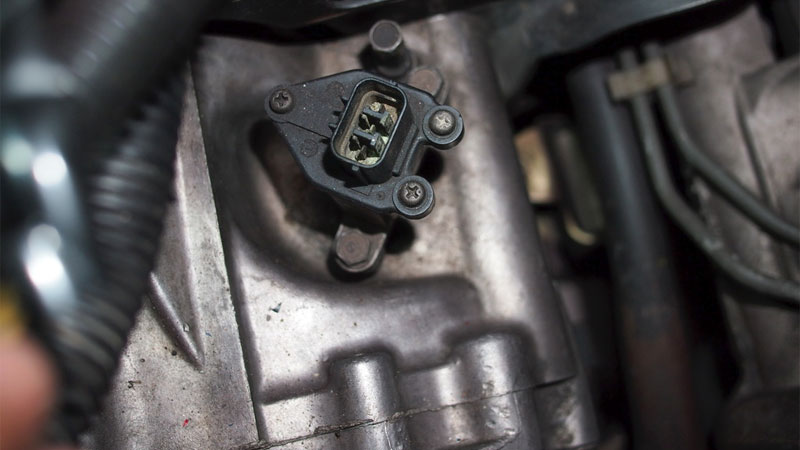
Most vehicles have a few vehicle speed sensors to transmit speed information about the vehicle to the engine control unit and the cruise control module. The only way your cruise control module is going to know how fast the vehicle is moving is if the vehicle speed sensors feed this information to it.
If the module cannot detect the speed because of faulty speed sensors, then the cruise control system will automatically deactivate.
6) Electrical Issues
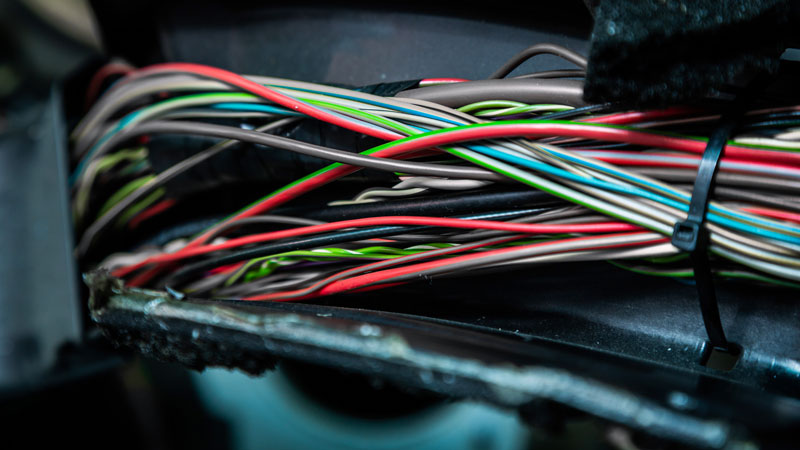
There are several electrical components connected to the cruise control system. The connectors and wiring harnesses, and ground straps are definitely components that you need to check when the cruise control stops working.
Make sure the source of the voltage is still supplying power to the system as well. If any of these components are loose or damaged, then it would explain why the cruise control isn’t functioning.
7) Loose or Broken Cruise Control Cable
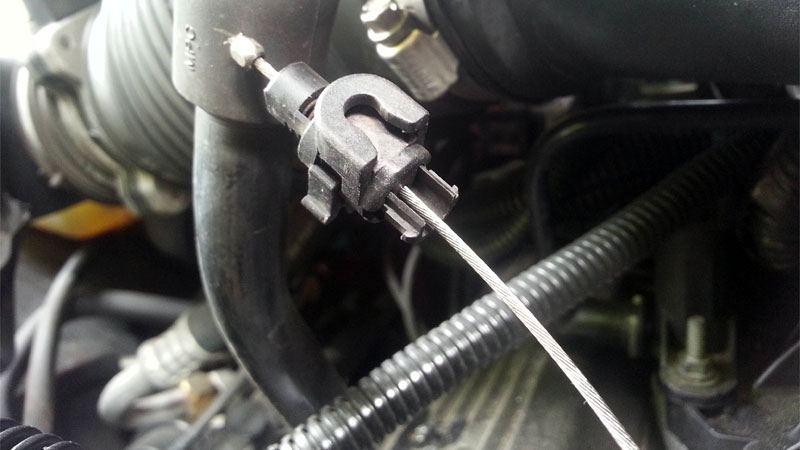
Older vehicles that are equipped with cruise control have two throttle cables – one for the gas pedal and one for the cruise control system.
These cables may stretch over time. If the cruise control cable has stretched or is broken, the cruise control system will not be able to operate the throttle plate properly.
Adaptive Cruise Control Specific Problems

Adaptive cruise control gives an extra layer of convenience while driving, as it adjusts your vehicle’s speed based on the distance to the car in front of you. However, this presents additional causes of cruise control failure.
One issue you might face is obstructed sensors. Both radar and cameras are important components of the adaptive cruise control system. When there’s dirt, debris, or ice covering these sensors, your cruise control can stop functioning. To prevent this, regularly clean your vehicle’s sensors, making sure they’re unobstructed.
Separately, failed cameras can also be a culprit. If the cameras aren’t working correctly, you may see an error warning. It’s best to get this checked by a professional to determine whether the cameras need repair or replacement. Hopefully it’s not as they are an expensive replacement.
Apart from cameras, adaptive cruise control relies heavily on radar technology for proper functioning. A misaligned or malfunctioning radar sensor can cause your system to behave irregularly. Again, consult a qualified technician to diagnose the issue and, if needed, recalibrate or replace the radar system.
Safe Driving Without Cruise Control
When cruise control systems fail, it presents challenges adjusting to speed management without the consistent pacing it provides. But there are a few things you can do.
- Focus on scanning gauges more frequently to stay actively aware of mph.
- Avoid zoning out on long hauls.
- Set phone alerts every few miles to remind checking current travel speed.
- Know highway speed limits well so mentally benchmarking against them continues subconsciously.
- Take frequent breaks stretching legs to re-energize alertness until able to diagnose cruise faults.
- Consider alternative adaptive cruise technologies equipped on newer vehicles if financially viable, providing automated incremental slowing when closing distances on lead cars.
- Remain vigilant of lead car distances and your own speed fluctuations.
- Utilize open lanes with fewer surrounding vehicles if possible, reducing needs for continual minor adjustments.
- Stay alert with renewed attention and defensive awareness absent cruise controls automated convenience until repairs are completed.
Intermittent Fault Identification
When cruise controls experience occasional yet repeating failures, meticulously logging every instance of malfunction helps uncover patterns guiding toward root causes.
Date and time each cutoff or disengagement that happens while activated. Detail any environmental or operational conditions present such as: weather, bumpy vs smooth roads, stop & go traffic versus highway speeds.
Reviewing complete repair histories alongside these event logs indicates if previously replaced components only provided temporary fixes before subsequent re-failure later on. Share documented patterns of when and how interruptions occur with shop technicians to guide their pathway tracing and component testing.
The goal is determining if specific elements like an old switch, wire insulation or solder joint chronically breaks down only under certain temperature, vibration or usage strain thresholds.
Cruise Control Repair Costs
So, your cruise control decided to take a break, and now you’re wondering how much it’ll cost to fix it. Well, repair costs vary depending on the specific issue and your vehicle’s make and model. This section will provide you with an idea of what to expect in terms of expenses.
Let’s look at the common reasons for cruise control problems and their approximate price range for replacement or repair:
- Faulty Cruise Control Switch – $100 – $200. A bit more expensive than a brake light switch.
- Blown Fuse – $5 – $30. Quick and affordable to replace.
- Faulty Brake Light Switch – $50 – $150. Can be a bit pricier but still manageable.
- Defective Speed Sensor – $100 – $300. Falls somewhere in the middle of the price spectrum.
- Throttle Control System Issues – $200 – $600. More expensive to diagnose and fix.
- ABS-related Problems – $200 – $1,000. Can also be quite costly to repair.
- Broken Vacuum Line – $50 – $150. Applicable to older systems and typically inexpensive to fix.
How Does Cruise Control Work?
If you normally drive long distances, especially on the interstate, then cruise control lets you take your foot off the gas while the car maintains the same speed, giving your leg a rest. This may seem like merely a luxurious feature rather than a necessity, but many people depend on it for safe driving.
There are several different types of cruise control systems, but all implementations share similar basic components. There is a sensor to measure vehicle speed, a throttle position sensor , and some mechanism to control the throttle plate without the use of the gas pedal.
Outputs from the speed and throttle position sensors allow the engine computer to determine how much the throttle plate needs to open or close to maintain speed.
Cruise control systems may also use sensors in the transmission, taking the current gear and engine vacuum into account. Throttle position will be different in each gear at a given speed, especially when driving over hills.
Related: How Does Drive-By-Wire Technology Work?
- Recent Posts
- Power Windows Not Working? (10 Common Causes and How to Fix) - February 8, 2024
- 14 Causes of a Car Losing Power When Accelerating - January 23, 2024
- 13 Causes of Poor Gas Mileage (Increase Your MPG) - December 13, 2023
13 thoughts on “7 Reasons Why Cruise Control is Not Working”
have a 2006 VW new Beetle my cruise works fine until i go to pass some one ,any idea what would cause it to do this? ?
When you hit the gas pedal to overtake, you might be disengaging cruise control.
i’ve heard that bad fuel can create such issue. As stated above, the Check Engine light will come on as part of the safety features to inform you something is not right. Cruise control picks up on this and shuts down.
The engine light was flashing then it stopped then started again, the cruise control is disabled but did come on a couple of times but went off when the engine needed to accelerate, the engine shakes when I. Accelerate too.
my aftermarket cruise on a 2013 Kio Rio LX wont light up
You’re going to have a hard time with finding help for that without providing the name and model of the aftermarket system. It might be best to take it to someone so they can troubleshoot in person.
My cruise indicator light will turn on but when I try to set the speed the light will shut off and not turn back on until I restart the engine. Any ideas what it might be?
Did you ever figure this one out. I got 99 Durango does this too
Cruise control goes rite into high speed when turned on,what could the problem be?
This helped me a lot. I got more out of your 6 reasons a cruise control may not work, than when I inquired about the same situation and got nothing. Thank You, Janet M.
Thanks for the feedback, Janet!
Helpful. Thank you
Mine is a mercedes benz c180, 2002 model my cruise control have just stopped working . So what are the possible causes
Leave a Comment Cancel reply
Cruise Control Not Working? 9 Potential Causes
gabrieletamborrelli / Getty Images
- Cars & Motorcycles
- Frugal Living
- Fine Arts & Crafts
- Card Games & Gambling
- Playing Music
Cruise control reduces stress and fatigue on long drives, but if the system isn't working properly, it can become dangerous. If your vehicle's cruise control isn't working, one of the following nine issues may be the root cause.
How Cruise Control Works
Cruise control is a system to maintain vehicle speed without direct driver input. When you want to engage cruise control, you first turn the system “On” with a button or switch. However, this alone does not start the cruise control. When you “Set” cruising speed, the cruise control module (CCM) records the current speed, then takes control of the throttle body to maintain vehicle speed. When vehicle speed increases or decreases (due to wind or hills, for example), the CCM decreases or increases throttle body opening accordingly.
By modulating engine speed, the CCM can maintain your desired cruising speed on the highway. You can increase or decrease cruise speed by tapping a button or lever, and you can cancel cruise control by hitting the “Cancel” or “Off” buttons or stepping on the brake.
Throttle body control has changed over the years. Early systems used a vacuum motor and cable, but these eventually changed over to electric motors. Most recently, with the development of drive-by-wire or electronic throttle control systems (ETCS), cruise control is built into the engine control module (ECM), which controls the throttle body electronically.
Basic cruise control systems still require the driver to pay attention to changing road and traffic conditions. Adaptive cruise control systems, sometimes called "smart" cruise, use radar or laser detection to maintain safe distances from vehicles ahead. Some adaptive cruise control systems merely reduce engine speed to maintain distance, but some of the newest adaptive cruise control systems can also engage the brakes to slow or stop the vehicle. Still, even with adaptive cruise control, it's important that drivers never take their eyes off the road.
Why Is My Cruise Control Not Working?
There are a few basic ways that cruise control can fail, depending on how the system is designed. You may not be able to do much about ETCS cruise control systems, but there are a few things you can check:
Brake Light Switch – As cruise control is automatically cancelled by depressing the brake, some vehicles may disengage cruise control if it cannot detect the brake light switch.
Brake Lights – In some systems, cruise control is disabled when a brake light is blown. Aftermarket lighting, such as LED brake light conversion, might trick the CCM into thinking a brake light is blown, as LED bulbs draw less current than incandescent bulbs.
Fuses and Relays – On some vehicles, fuses and relays are used to protect the cruise control actuator circuit . If the fuse is blown or the relay is faulty, the system won’t work.
Spiral Cable – Many vehicles mount the cruise control switch on the steering wheel. A faulty spiral cable may have an open circuit, preventing the switch from contacting the CCM.
Control Switch – If the internal contacts wear out, the cruise control switch may not be able to contact the CCM. This might disable cruise control completely, or it might not react to the cancel or accelerate functions.
Check Engine Light – On some modern vehicles, particularly those equipped with ETCS, cruise control may be disabled if there is an engine or transmission problem .
Vacuum Leak – Some older vehicles used vacuum actuators to control the throttle body during cruise control operation. If there is a leak, such as a cracked hose or tube, the system won’t work. A vacuum leak might cause the engine to idler higher or set a fuel trim code.
Vehicle Speed Sensor – There are usually multiple vehicle speed sensors (VSS) on any given vehicle. The CCM might use a VSS feed from the ECM, instrument cluster, or transmission. If that signal is lost, the CCM can’t detect vehicle speed, disabling cruise control.
Electrical Problems – As most cruise control systems use electrical or electronic components, any diagnosis should include a thorough check of source voltage, wiring harnesses, and connectors. Anything loose or broken could disable the system entirely.
If your cruise control isn’t working properly, avoid using it until it is repaired. A faulty cruise control system may not cancel on demand, which will create a safety hazard for you and those around you. After assessing your cruise control yourself, take your vehicle to a trusted mechanic for a check or a couple diagnosis and repair.
- How to Diagnose a Ford Expedition Transmission Problem
- ABS Brakes and the Facts
- How Electronic Throttle Control (ETC) Works
- How the Air Intake System Works
- Engine Vacuum Leak: Symptoms and Solutions
- Diagnosing GM Converter Lock-Up Problems
- What to Do When Your Car Won't Start or Turn Over
- How to Replace a Vehicle Speed Sensor
- Troubleshooting Idle Problems in Mazda Engines
- How to Find a Short Circuit
- Cylinder Deactivation
- How to Ride a Motorcycle in 10 Simple Steps
- Trailer Wiring Diagram and Color Chart
- Is Your Car Idling Too Rough?
- Troubleshooting Common Condenser Fan Problems
- How to Start a Car That Has Been Kept in Storage

Cruise Control Not Working? (11 Reasons Why)

Cruise control is a great feature that some cars have to help you maintain your car’s speed without accelerating. However, cruise control is not perfect, as something can go wrong and keep it from functioning.
When your cruise control is not working, you may be wondering what caused it. I looked up the facts, and here is what I learned!
1. A Blown Fuse
One of the most common reasons why your cruise control stopped working is that you have a fuse blown out.
Generally, all of the electrical systems in your car will be controlled by fuses, which is in charge of protecting the main electrical component.
When there is a fault or short circuit, the fuse is meant to blow to protect the major electrical parts from damage.
However, a blown fuse will also keep the electrical systems like cruise control from working because no electricity will reach them.
2. Bad Speed Sensor
Usually, cruise control is meant to help you maintain your car’s speed without accelerating, so having a bad speed sensor can make your cruise control malfunction.
A speed sensor is responsible for measuring the wheel speed or transaxle or transmission output.
As such, the speeds sensors try to see if the car needs traction control, which is crucial for cruise control.
Normally, your cruise control will not work or even malfunction when the speed sensors are faulty because it cannot accurately measure the car’s speed.
Moreover, you will be able to tell if there is an issue with your speed sensors when your speedometer acts oddly or gives inaccurate readings.
Additionally, issues with the speed sensors will also trigger a check engine light or ABS warning light on your car’s dashboard.
3. Faulty Brake Pedal Switch
Usually, having a faulty brake pedal switch is the main reason why your cruise control would stop working.
Generally, your brake pedal switch is in charge of switching the brake lights on and off depending on the pedal’s position.
Usually, the designs for cruise control systems involve the cruise control disengaging whenever you press on the brake pedal.
So since the brake pedal switch is connected to the cruise control, having a faulty brake pedal switch can make your cruise control stop working.
For instance, your car may think that the brakes were engaged when the brake pedal switch malfunctions, making the cruise control automatically switch off.
Another way to tell that you have a faulty brake pedal switch is when your brake lights turn on and off randomly.
4. Bad Vacuum Actuator Or Cable
If you happen to have an older car that has cruise control, chances are that your cruise control does not work because of a problem with a throttle cable or vacuum actuator.
Normally, having any issue with the actuator will make the cruise control malfunction.
Moreover, the cruise control usually fails when the cable that links the actuator to the car’s throttle has been damaged.
5. Damaged Relay
While not all cars have this, some cars will have relays that protect the circuit of the cruise control actuator.
A relay is a type of electric switch that closes and opens the circuit, which means a relay operates similarly to a switch.
If your car’s cruise control has a relay that is damaged, your cruise control will not work because the relay will not open and close the circuit when you use it.
6. Brake Lights

If you recently blew a brake light, there is a good chance that your cruise control does not work due to a blown brake light.
For some car systems, the cruise control will get disabled when one or multiple brake lights blow.
Normally, this can occur because you have had your brake lights for a long time, so they would have burned out.
However, getting aftermarket lighting like LED brake light conversion could be the cause as well.
For instance, aftermarket lighting may not be completely compatible for your car, so it would trick the central control module into believing there is a blown brake light.
So even if your brake light is not blown, your central control module would think it is and make your cruise control malfunction.
7. Faulty Spiral Cable
For most cars, the cruise control switch is mounted on the steering wheel, which is where you can find a spiral cable.
Occasionally, the spiral cable can be faulty, which creates an open circuit that keeps your cruise control switch from contacting your car’s central control module.
Normally, this can be fixed by having a mechanic replace the spiral cable since you usually cannot repair the spiral cable.
8. Electrical Issues
Generally, cruise control systems in cars are electronic, which means there are various components that work together to make the cruise control system operate.
As such, any problem with the electrical components in the cruise control is a common reason why your cruise control would stop working.
Normally, one of the more common electrical issues that can occur with the cruise control is that you have a faulty connector or wiring harness in your cruise control system.
Next, the next issue that can occur is that your voltage source may not be giving enough power to the cruise control system.
Additionally, the cruise control may not work because it is not being engaged, which normally happens when you have a defective cruise control button or switch.
Ideally, it is best to have a mechanic look for electrical issues with the cruise control to repair any wiring issues.
9. Check Engine Light
If you have a modern car, especially a car with electronic throttle control, your check engine light may be keeping your cruise control from working.
Generally, having a problem with your transmission or engine will disable your car’s cruise control.
Usually, your engine’s control unit will disable the cruise control once it detects an issue with your transmission or engine as a safety precaution.
If you notice that your check engine light goes on, your cruise control light will also blink to alert you that the cruise control was disabled.
In some cases, your car’s dynamic stability control light may also switch on to signal that it has been disabled when the check engine and cruise control lights illuminate.
10. Control Switch
Normally, most cruise control systems turn on and off the cruise control, so having a defective control switch could make your cruise control stop working.
For control switches, there are internal contacts that turn the cruise control on and off whenever you press a button or flip a switch.
When these internal contacts get worn out, your cruise control switch will not be able to contact the central control module.
Therefore, the cruise control system would not react to accelerate or cancel functions, or the cruise control may get disabled altogether.
Typically, this can be fixed by finding a new control switch to replace the worn out contacts on the faulty control switch.
11. Vacuum Leak
As stated earlier, having damage in your actuator or the cables of the actuator can affect your cruise control, and so can a vacuum leak.
There are tubes or hoses in the actuator, and they can occasionally get a leak that can make the cruise control stop working.
Normally, there are other signs that you can watch out for if you have a vacuum leak, such as noticing the engine sets a fuel trim code or your engine idlers higher.
Conclusion
Typically, cruise control will stop working because there is a different issue in your car, such as a transmission or engine problem.
However, having an issue with your brakes or the cruise control system itself can make your cruise control malfunction.
Leave a Comment Cancel reply
Save my name, email, and website in this browser for the next time I comment.
Welcome to Autoily.com! We are a group of passionate car, motorbike, RV, and pickup truck owners. Our aim is to provide concise, easy-to-understand, and useful information on vehicles, maintenance, and components.
© Autoily.com

- Great service and affordable. Local business owner. Love it!
- -Jeff S., Tucson, Arizona
- Call Us Today!
(520) 622-7685
We Accept All Major Credit Cards!
- Alternator Replacement
- Auto Air Conditioner Repair
- Automatic Transmission Repair
- Automotive Fluid Services
- Brake Service & Repair
- Car Battery Testing & Replacement, Buy Car Batteries
- Car Engine Repair
- Car Heater Blower Repair
- Check Engine Light Diagnosis
- Clutch Replacement Service
- Diesel Injector Repair
- Electrical Troubleshooting
- Emissions Services
- Factory Recommended Maintenance Services
- Fuel System Cleaning Services
- Radiator Replacement
- Shock and Strut Replacement
- Starter Repair and Replacement
- Timing Belt Replacement
- Tire Repair and Replacement
- Tucson Commercial Truck Service & Repair
- Water Pump Replacement Service
- Wheel Alignment Service
- Windshield Wiper Repair and Replacement
4 Reasons Why Your Cruise Control Stopped Working
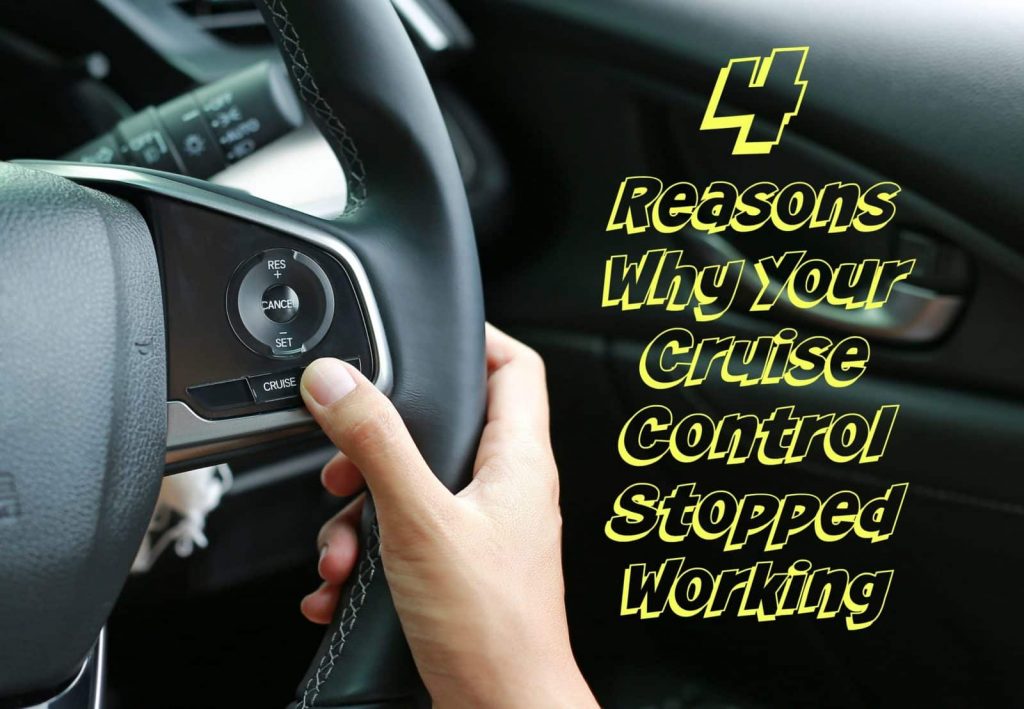
Cruise control is part of the electrical system of your vehicle that automatically controls your car’s speed. It does this by taking over the car throttle to maintain a steady speed set by the driver. Cruise control is advantageous to help drivers avoid the temptation to exceed the speed limit, and it can prevent driver fatigue when travelling long distances. More modern “adaptive” cruise control systems even allow you to maintain a certain distance behind the vehicle in front of you. But you might have noticed one day, this speed regulation system in your car suddenly stopped working altogether. Here are 4 reasons why your cruise control may have stopped working:
- Your car has blown a fuse . Since your car’s cruise control is part of an electrical system, it needs a fuse to function properly. A short circuit in this system can cause a fuse to blow, which means that the cruise control will suddenly stop working. Fortunately, replacing a blown fuse is a cheap and easy repair for any auto mechanic.
- The speed sensor is broken. Your car’s speed sensing mechanisms have a variety of purposes. These include regulating the fuel flow and ignition timing, indicating the speed that your car is travelling, and operating the cruise control system. If the speed sensor stops functioning properly, the cruise control will stop working. You might also notice some other common symptoms with your vehicle. These include speedometer malfunction, a transmission that is rough when changing gears, and the check engine icon periodically lighting up.
- A failing brake light or brake pedal switch . The brake pedal switch is responsible for turning on your car’s brake lights when the brake pedal is being pressed. When the brake pedal switch activates, your car’s cruise control automatically disengages. If the brake pedal or brake light are not working properly, your car might detect that the brakes are being applied and prevent the cruise control system from working.
- Problems in the electrical system . Any issues with your car’s electrical components can cause the cruise control to stop working. These issues could be something as simple as a loose wire or connector, or something more complicated like a damaged alternator, starter, or electrical short circuit. Problems with your vehicle’s electrical system can be detected through a variety of warning signs . These include problems starting your car, a dead battery or alternator, dim headlights or brake lights, and blown fuses.
There are also some other, less likely potential problems that would cause the cruise control to stop working.A lot of vehicles have the cruise control switch mounted on the steering wheel. The steering wheel can rotate with the use of a spiral cable, while maintaining electrical connections to other vehicle systems. On some older vehicles, the cruise control system works with the use of a vacuum actuator . If either the spiral cable, vacuum actuator, or vacuum hoses are faulty, the cruise control may stop working.
If your car’s cruise control has suddenly stopped working, you should avoid using it until the problem can be diagnosed and repaired. You should bring your vehicle to a certified auto mechanic. If you are in the Tucson, AZ area, you can trust the experts at Accurate Service full-service auto repair shop. We work on all makes and models of vehicles and have received some stellar reviews from our previous customers. We are also diesel service experts, specializing in diesel cars, pickups and light and medium duty diesel trucks. Just schedule an appointment online or give us a call at (520) 620-9129.
843 S Campbell Ave Tucson, AZ 85719
[email protected].
- © 2022 Accurate Service Inc.
- All Rights Reserved

- my account Sign in Register
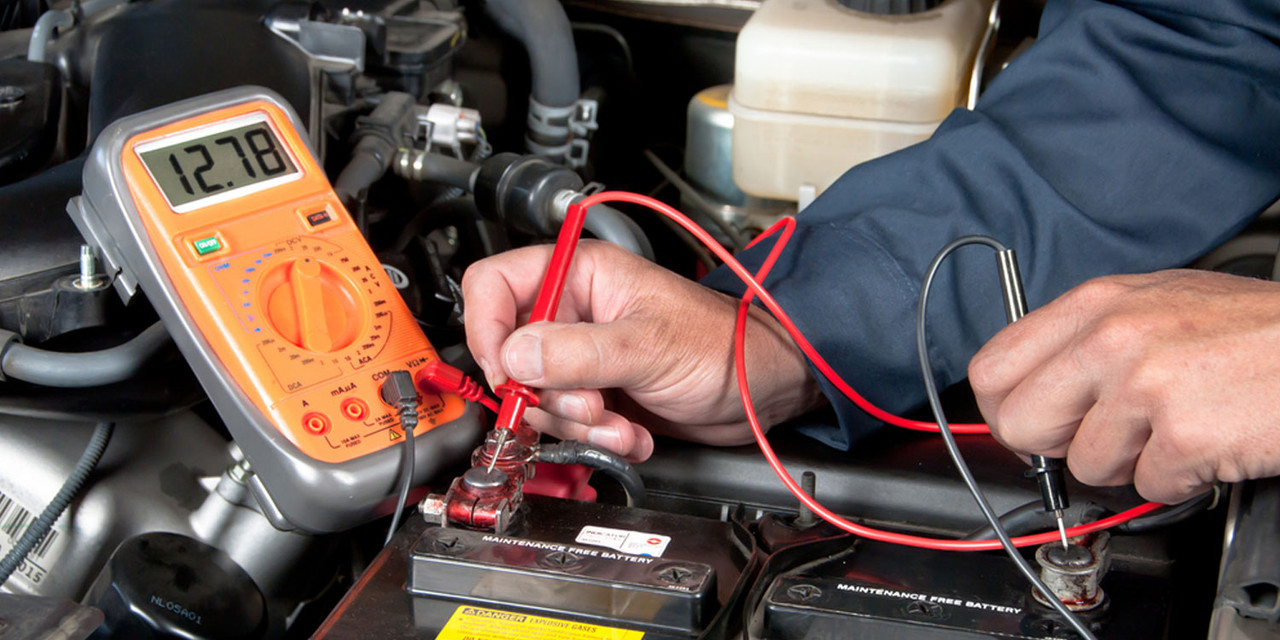
CRUISE PARTS

UNIVERSAL ROSTRA CRUISE CONTROL

GMC SAVANA VAN WITH GASOLINE ENGINE

OEM CRUISE CONTROL KIT

CRUISE CONTROL KIT
New cruise kits.
Best Sellers
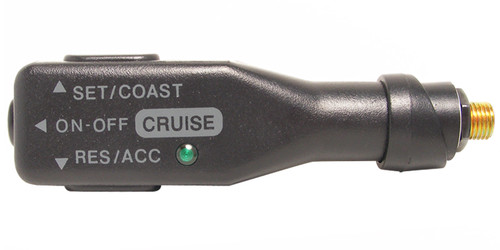
250-9652 2019+ Dodge Ram Truck Cruise Control

250-9648 2022 + Dodge Ram Promaster Cruise Control
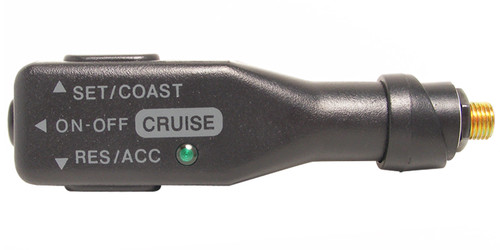
250-9642 2014-2021 Dodge Ram Promaster Cruise Control
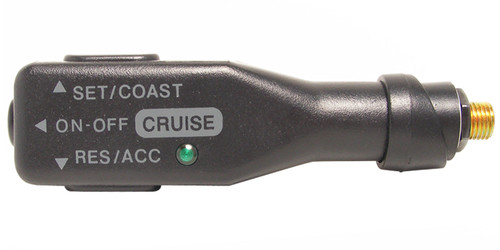
250-9668 2021+ Ford F-150 Truck Complete Rostra Cruise Control kit

250-9647 2023+ Chevy Express Van Complete Rostra Cruise Control Kit

250-9661 Ford Maverick 2022 Rostra Cruise Control kit

250-9666 Ford Transit Van 2020-2024 Rostra Cruise Control kit

250-9510 2017-2022 F-250 F-350 F-450 Complete Rostra Cruise Control kit

250-9618 2012-2022 Chevy Spark Complete Cruise Control Kit Auto Transmission
Browse Cruise Kits by Brand

The Cruise Control Store has been selling and installing cruise controls for over 25 years.

Offering factory upgrade cruise control kits for many vehicles as well as aftermarket cruise control kits for 99% of all domestic and Japanese/Korean models. Everything on our site is in stock and in most cases, will ship the same day or within one business day. Our sales associates are technicians as well, so you can rest assured that you're buying the exact cruise control kit that’s right for your vehicle. Everyone at The Cruise Control Store is dedicated to making sure that you are 100% satisfied with your purchase, and we’ll work with you every step of the way to ensure just that. If for any reason you are unsatisfied with your purchase or our technical assistance, simply return your cruise control kit for a refund*.
Can I Add Cruise Control to my Car?
Yes--and it's easier than you might think. Simply purchase the correct aftermarket cruise control kit, then follow our instructions or bring your car into your local mechanic. And we offer technicall assistance for every kit we sell. Before you know it, you'll be cruising!
BENEFITS OF PURCHASING AN AFTERMARKET KIT
Aftermarket cruise control kits offer a lot of convenience to vehicle owners including; better fuel economy - higher vehicle resale value - less driver fatigue on those long trips.
Some people may buy a new car and think that they don’t really need or want cruise control, only to find out otherwise later on. For these reasons, installing aftermarket cruise control is the way to go. Most of our kits are DIY ready (or by a professional auto shop, if you prefer), and you’ll be able to find the exact kit in our inventory for your specific vehicle.
WHAT’S AVAILABLE FROM THE CRUISE CONTROL STORE?
At The Cruise Control Store, we’re dedicated to offering aftermarket cruise control kits for a wide range of makes, models and years. We offer aftermarket cruise control kits for domestic and imports, including, but not limited to:

Can You Add Aftermarket Cruise Control? [And How To]
- July 20, 2023
- Electronics
Cruise control is a feature in many cars. It allows drivers to control the speed of their vehicles without significantly relying on manual controls. But is it possible to install aftermarket cruise control? If so, how can you complete the installation procedure? We researched the answers to these questions, and here's what we found.
Most cars allow installations for aftermarket cruise control systems. Vehicle owners should first check if their chosen cruise control kits are compatible with their vehicles. Universal kits are available on the market to help reduce the inconvenience and risks associated with buying the wrong model.
Here's a quick look at the steps to install an aftermarket cruise control in a car:
- Program the actuator and install it in a safe location in the vehicle.
- Measure the throttle travel and mark the distance from the starting and finishing points.
- Set the pulley segment to its open throttle position.
- Slide the barrel cable through the appropriate hole and connect it to the rest of the cable assembly.
- Remove the sleeve from the cable assembly with a wrench and nut.
- Screw the snap-in adapter and attach it to the extension bracket.
- Straighten the wiring harness by separating the 4-pin mating connectors.
- Pass the 4-pin connector and the violet wire through the correct hole.
- Reconnect the 4-pin connector and attach the other wires.
- Use the sealing putty to cover the bulkhead hole.
- Install the lever assembly in the driver panel.
- Run diagnostics to check if the newly installed cruise control works.
One mistake can lead to disastrous results despite installing an aftermarket cruise control being a relatively DIY-friendly job. Continue reading to learn more about cruise control systems. We'll also talk about the installation steps in greater detail as you keep reading this post.
![aftermarket cruise control not working Driver setting the cruise control setting, Can You Add Aftermarket Cruise Control? [And How To]](https://vehq.com/wp-content/uploads/2022/03/Can-You-Add-Aftermarket-Cruise-Control-And-How-To-1.png)
What Is Cruise Control And How Does It Work?
Generally, cruise control functions by controlling a car's speed. For example, hitting the cruise control button once can cause a vehicle to accelerate or decelerate by one mph. So pressing the same button three times makes the car go faster or slower by three mph.
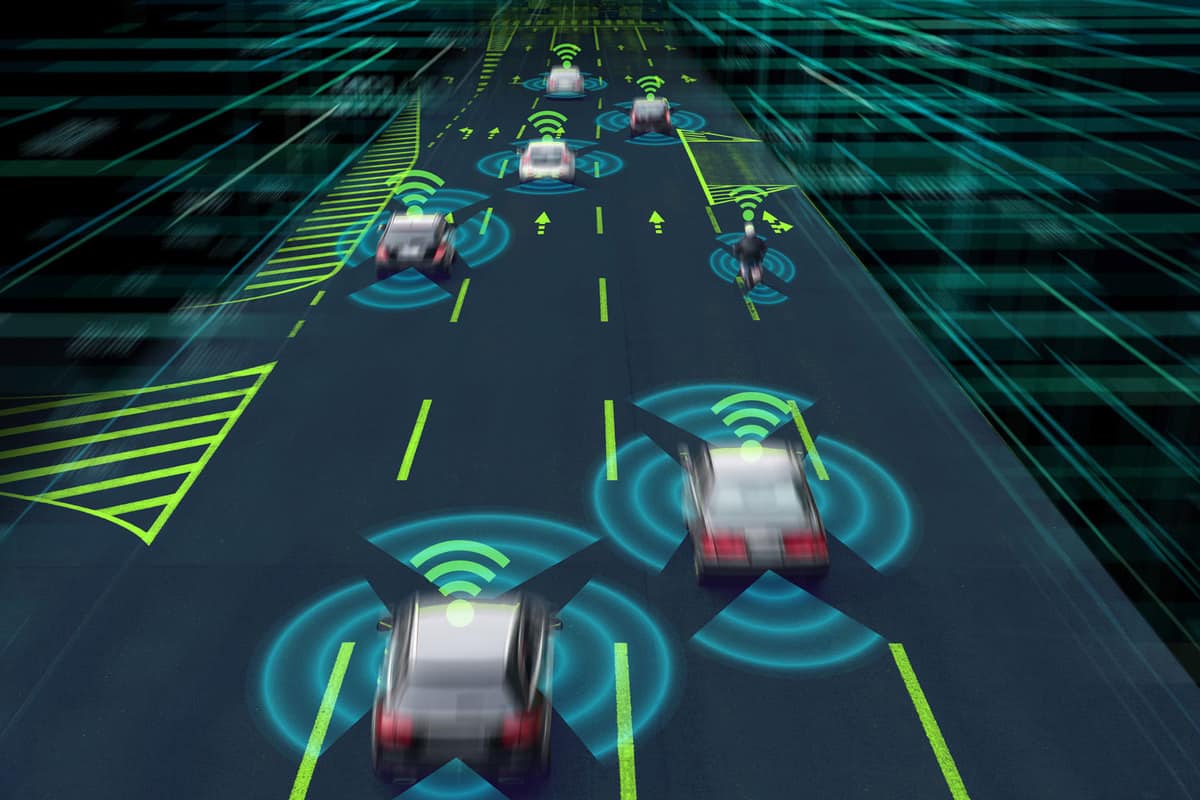
Various manufacturers also add extra features with their cars' cruise control features. Some of these add-ons may include [but aren't limited to]:
- Automatic disengage: The cruise control will stop working upon hitting the brake pedal.
- Adaptive cruise control: Uses laser or radar sensors to detect objects at the front and switch the vehicle's speed according to real-time driving conditions.
- Set/Accel: Maintains the car's current speed.
Can Cruise Control Be Installed Aftermarket?
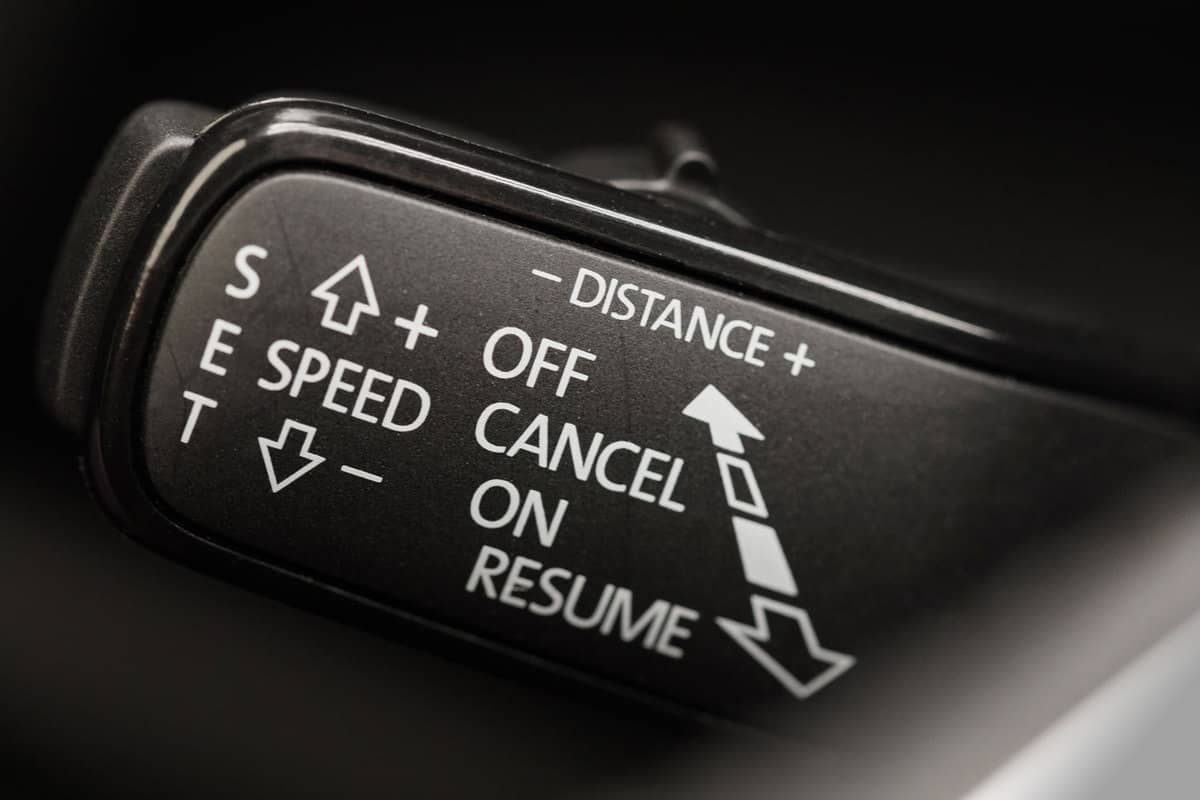
It's possible to install aftermarket cruise control on relatively any car. The vehicle will typically only need a control switch to activate the features built into the cruise control module.
But keep in mind that different cruise control providers often add different characteristics and features to their products. The price ranges may also vary for each supplier.
Also, be aware that installing aftermarket products, including cruise control systems, may void the car manufacturer's warranty. Ensure that you fully understand the risks involved in installing third-party cruise control systems before proceeding with the assembly.
How To Install Cruise Control Kit For Car?
Before proceeding with this project, make sure that the cruise control kit is compatible with your vehicle. Also, read this system's owner's guide; the instruction manual may show you unique steps that might not be present in some cruise control kits offered by other brands.
You may also need to purchase other equipment required for this project. So expect to spend more money to buy these materials and tools to complete the cruise control setup properly. One of the needed items is a signal generator, which your car may or may not possess. Consult the carmaker to verify the existence of this component if you're unsure.
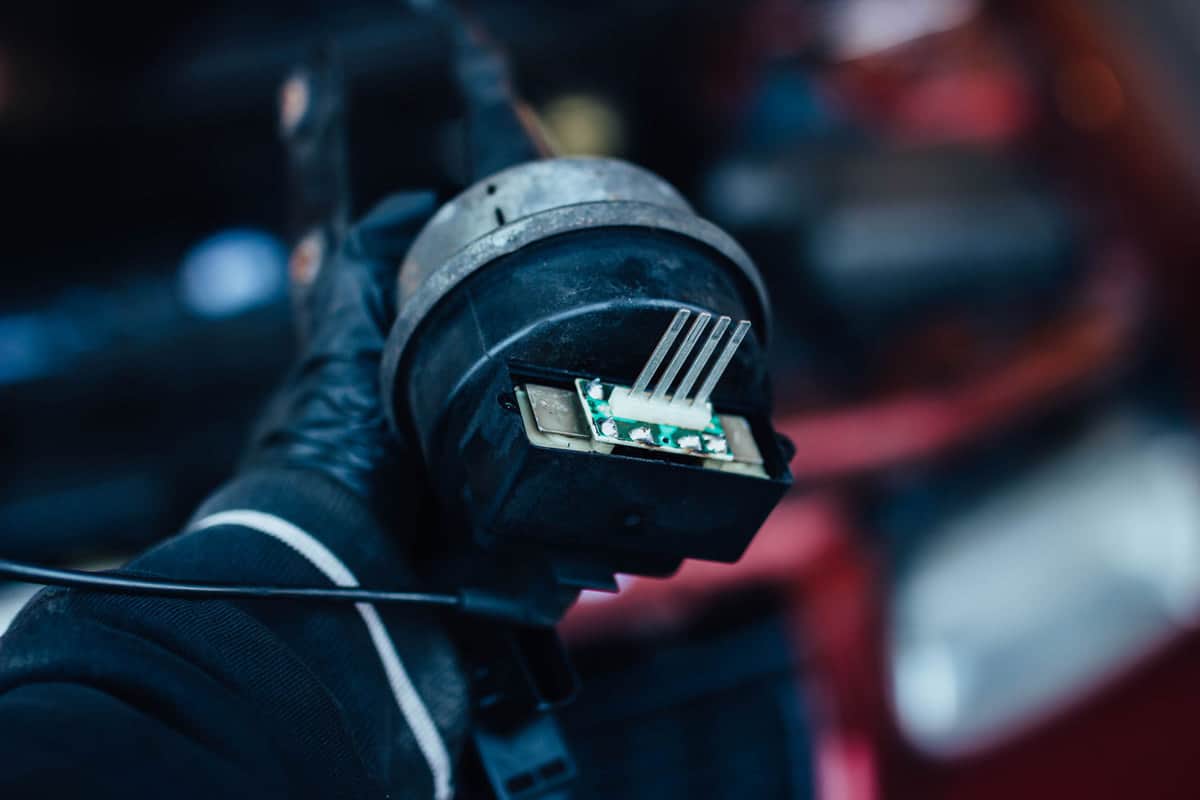
Finally, take the time and don't hurry with the installation. An improperly installed cruise control system may result in a system malfunction. It can then damage the vehicle and pose a high risk of injury to its driver and passengers. The engine should also be off while setting up the kit to prevent accidents while completing the task.
After finishing the preparations and preventive measures, here are the steps to help you install a cruise control kit on your car:
What You'll Need
- Cruise control kit
- Actuator assembly with harness
- Mounting kit
- Extension bracket
- Snap-in adapter
- Screwdriver [optional]

Step-by-Step Guide
- Program the actuator assembly according to the cruise control's installation manual. You should see a chart that tells the actuator switches should be at the on or off positions.
- Place the programmed actuator assembly into your preferred safe location in your vehicle. Ensure that the harness reaches the actuator from that place.
- Measure the throttle travel from its idle to the wide-open position. Mark the starting and finishing points with a marker to serve as a guide.
- Set the pulley segment to the open throttle position.
- Slide the end of the barrel cable through the hole.
- Connect the loop cable to the cable assembly. Use the bead chain connector if necessary.
- Use an appropriately sized wrench with an accompanying nut. Turn the wrench and nut counter-clockwise to remove the sleeve from the cable assembly.
- Screw the snap-in adapter to the cable assembly. Ensure that the assembly extends further than the adapter.
- Attach the snap-in adapter to the square hole of the extension bracket.
- Straighten the harness assembly by separating the 4-pin mating connectors. You may need a screwdriver for this step.
- Pass the 4-pin connector and the accompanying violet wire through the appropriate hole.
- Reattach the 4-pin mating connector and attach the other wires.
- Seal the bulkhead hole with sealing putty, which should also be in the cruise control kit.
- Connect the other wires with their color-coded adapters.
- Install the lever assembly in your vehicle's driver panel as instructed by the kit's manual.
- Run diagnostics to check if the aftermarket cruise control system works as intended.

Check out this cruise control kit on Amazon.
You can also watch the video below to learn more details about this task:
What Cars Have Adaptive Cruise Control?
Adaptive cruise control [ACC] is a system that often uses sensory technology to apply the brakes and deliver warning signals to the driver if needed. Some vehicles that have this feature are:
- 2018 Honda Accord
- 2018 Toyota Rav4
- 2019 Kia Soul
- 2020 Toyota Corolla Hatchback
- 2020 Volvo S60
You might also be wondering if the Volvo V60 has adaptive cruise control. If so, you can read our post on that topic to satisfy your curiosity.
What Is The Disadvantage Of Cruise Control?
Cruise control is usually a benefit for many drivers. But users should pay attention to the correct scenarios to use this system. Some instances may demand drivers to rely more on their inherent skill than depending on the vehicle's automatic features to guide them while on the road.
So you should not use cruise control when:
The Road Is Slippery

Snow and heavy rain can reduce the efficiency of cruise control systems. Take note that cruise controls often handle the acceleration and deceleration of a vehicle. That means that many of these apparatuses generally don't consider the wheels' traction on different terrain.
Traffic Is Heavy
It can be challenging to gauge the recommended speed to use in heavy or slow-moving traffic. If you find yourself in that situation, it's best to switch to manual controls rather than relying on the cruise control system to reduce the risks of on-road accidents.
Encounter Twisting Roads

Sharp turns can become more dangerous than usual if you put too much faith in your car's cruise control feature. It's in these driving conditions that you should manually regulate your speed.
You're Sleepy
It's always best not to take the wheel if you're feeling drowsy. However, if you need to drive and feel sleepy, relying on cruise control may make you feel more comfortable. If so, you might put yourself at a high risk of sleeping behind the wheel.
You can also read our post on when to use cruise control to learn more about the hazards of using this technology.
Final Words
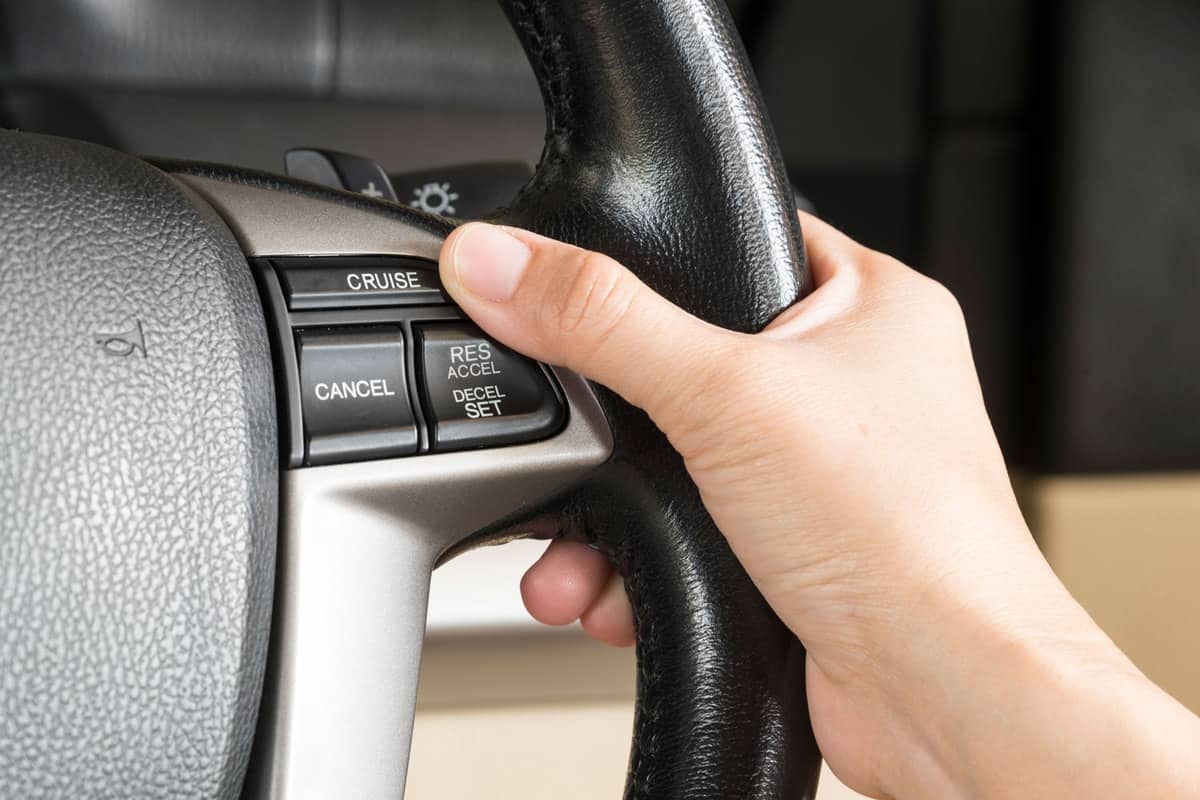
You can install aftermarket cruise controls in many vehicles that don't have these technologies. Make sure to follow the correct installation procedure to set up this system properly. Failure to complete a proper installation can result in vehicle damage and a high driver and passenger injury risk.
Related posts:
- How To Remote Start Jeep Cherokee [Including Aftermarket]
- Does Volvo V60 Have Adaptive Cruise Control
- Does The Jaguar XF Have Adaptive Cruise Control?
- Does GMC Yukon Have Adaptive Cruise Control?
Leave a Reply Cancel Reply
Your email address will not be published. Required fields are marked *
Name *
Email *
Add Comment *
Post Comment

- Broken Down?
- Car Breakdown Cover
- Electric Car Breakdown Cover
- Van Breakdown Cover
- Motorcycle Breakdown Cover
- Classic Car Breakdown Cover
- Personal Breakdown Cover
- Short Term European Breakdown Cover
- Misfuel Cover
- Business Breakdown Cover
- Motoring Advice
- Vehicle Recovery
- Mobile Apps
- Corporate Social Responsibility
- Which? Recommended Provider
- 5 Star Defaqto Breakdown Cover
- Award Winning Breakdown Cover
- Frequently Asked Questions
- Travel Insurance
- Bicycle Insurance
- Home Insurance
- Motorbike Insurance
- Car Insurance
- Alloy Wheel Insurance
- GAP Insurance
- Pet Insurance
- Latest Stories
- Customer Lounge
- Business Lounge
- Looking for Business Cover?

- Breakdown Cover
- Car Servicing and Repairs
10 potential reasons why your cruise control is not working
What is cruise control.
Cruise control is a way of maintaining a selected constant speed without needing to use the accelerator pedal. It is closely integrated with the traction control and braking systems.
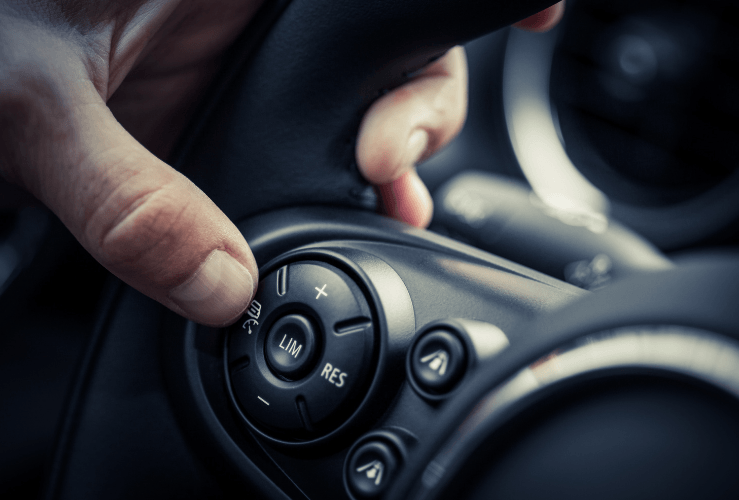
How do I know if my cruise control is not working?
Cruise control systems have become steadily more complex over time. This means it's not always easy to pinpoint why a cruise control system is not working - especially in newer models.
What happens if my cruise control stops working?
While cruise control can make long journeys easier and less stressful, if the system fails it can be dangerous. For example, it may not be possible to cancel a faulty cruise control system - which could have dire consequences. So if your cruise control only works sometimes, or not at all, avoid using it until you can find a solution - by taking it to a trusted mechanic. Alternatively, you may decide to research the issue and attempt to fix it yourself. However, the safest option is to take it to a garage.
Note: You should always check your vehicle handbook for any fault remedy before carrying out any work on your vehicle. If you are unsure of what is required to fix any problems, please consult a professional.
In this article we'll look at 10 of the most common reasons for a malfunctioning cruise control system.
How do cruise control systems work?
Before we begin, it's important to understand how cruise control systems work.
You must first activate the system by pressing the cruise control 'on' button - normally located by the steering wheel. However, this does not activate the system by itself.
Once you've set the cruising speed, the cruise control module (CCM) notes the present speed, then takes over the throttle body to maintain the speed of the car.
As the vehicle’s speed increases or decreases (due to inclines, for example), the CCM makes adjustments to the throttle body opening.
The desired cruising speed is maintained by modulating the engine speed. This speed can be adjusted, or cruise control can be cancelled by pressing 'cancel' or 'off'. The system is also cancelled if the driver applies the brakes.
Paying attention on the road
Cruise control systems are available with varying levels of complexity.
Aside from basic cruise control systems, ‘adaptive cruise control systems’ are often fitted with radar for maintaining safe distances between vehicles behind and ahead. Some even control engine speed in response to nearby vehicles.
Whichever cruise control system your car has, it's critical you still pay attention to other road users in order to avoid collisions. Cruise control should not be considered a fully ‘autonomous’ driving system.
Electronic throttle control systems (ETCS)
With electronic throttle control systems, cruise control is integrated with the engine control module (ECM). These are also known as 'drive-by-wire' systems because of their semi-autonomous nature.
Note that ETCS system failures may require the attention of a trained mechanic.
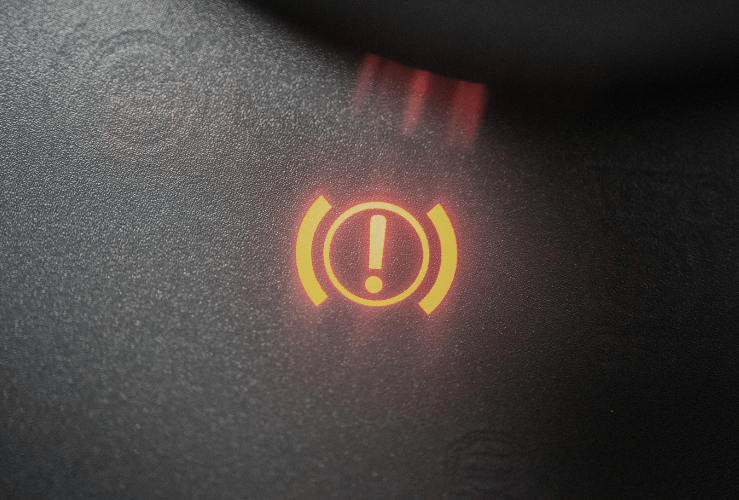
What are the top reasons for cruise control failure?
Brake light switch fault.
Cruise control systems will not activate if they cannot detect a working brake light switch. This is because cruise control systems automatically cancelled once the brakes are applied.
How do you repair a break light switch fault?
If you have some understanding of car mechanics, you may be able to examine the brake light switch, which is located below the steering wheel. However, because such systems have multiple wires, it can be difficult to identify any fault.
You may decide to invest in a multi-application service tool/OBD scanner, which can plug directly into your engine’s computer and pinpoint any fault with your brake light switch.
However, rather than spend money on an OBD scanner and learn how to use it, many people simply replace the brake light switch. Many aftermarket brake light switch replacements are available.
Cruise control switch function: worn out
It's possible for a cruise control switch to wear out over time by being pressed too much or too hard. It may also get damaged by drink spillages or by solvent used when cleaning the steering wheel.
This could mean the CCM cannot be communicated with, potentially disabling cruise control entirely.
How do you check if the cruise control switch function has worn out?
You may be able to confirm this is the issue with an OBD scanner. However, you can check this by looking to see if the cruise control light appears on the dashboard when the switch is operated.
Brake light issues
Some cruise control systems will not activate if they detect a blown brake light. Some aftermarket LED lights draw less current than factory-new lights, which can make the cruise control think a light has been blown.
Spiral cable fault
The spiral cable connects electrical circuits in the steering column to elements in the steering wheel - such as the cruise control activation button. If the spiral cable has an open circuit, the switch may be unable to communicate with the CCM.
Check engine light
Engine or transmission problems may automatically lead to the disabling of cruise control - especially if it's of the ETCS type.
Fuses and relays
The cruise control actuator circuit may be protected by fuses or relays. If these are blown or damaged, the cruise control system may not activate.
Vacuum leak
On some older cars vacuum actuators are used to manage the throttle body when cruise control is activated. A cracked tub or shoe could result in a leak, preventing the system from working. It might also make the engine idle higher.
Vehicle speed sensor fault
The modern car often has multiple speed sensors. If the ECM speed sensor signal used by the CCM is lost, cruise control will not work.
ABS sensor faults
If any of the ABS sensors are faulty (there is normally one on each wheel), the cruise control system will not activate.
Electrical problems
Electrical components are integral to cruise control systems, and should therefore be thoroughly checked in the event of a fault. Issues with source voltage, connectors and wiring harness could disable the system.
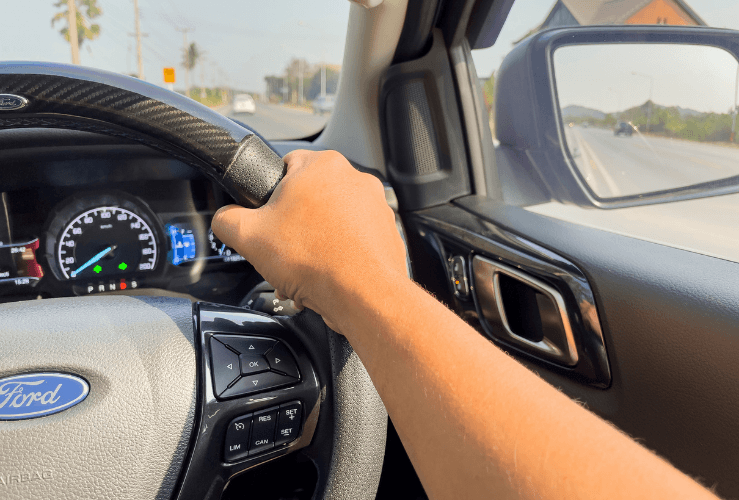
Credit: xzotica65 - stock.adobe.com
Ford cruise control not working?
If the cruise control system on your Ford is not working, the most likely culprits are still those listed above. However, experienced Ford mechanic “ Build It Make It ” on YouTube argues that burned out brake lights are the most common reasons for cruise control failure - especially on models such as the Ford F150.
The next most common reason for faulty Ford cruise control is a blown fuse . Fuses can be checked with a multimeter if you have the required experience, and then replaced.
Build It Make It then lists a broken brake light switch as being the next most common reason. A faulty shifter actuator is listed as the next most common fault cause. This is a lock to ensure you’re not gear shifting when you don’t have the brake engaged. Since the car cannot detect which gear you’re in, it will deactivate the cruise control as a safety measure.
And the fifth most common reason for Ford cruise control not working is faulty control switches . Unless you have extensive automotive mechanical experience, it may be best to have your control switches replaced by a trained Ford mechanic.
More possible Ford cruise control fault reasons
Auto Repair Guys on YouTube list the following as common reasons for Ford cruise control not working:
- Faulty cruise control fuse (often located under glove box) Note: newer Fords may not have fuses for cruise control
- Faulty control switches
- Faulty brake light switch (sometimes integrated with the cruise control switch)
- Faulty ‘cork spring’ or ‘spiral cable’ - as mentioned this connects the steering wheel controls to the car’s computer.
- Motoring Developments and The Future
- Fuel Types and the Environment
- Safety and Security
- Weather and Seasons
- Breakdown Advice
- Driving In Europe
- Tips on Choosing Breakdown Cover
- Motoring Costs
- In-Car Games
- Motorcycling Advice
- What is An Air-Con Bomb and How Do You Use One?
- When and How to Check Your Car Brakes
- Car servicing: Is using a dealership worth it?
- What is ABS? The Anti-lock Braking System Explained
- Car rust: How to repair and prevent it – Complete guide
- Catalytic Converters: What Does a Catalytic Converter Do?
- How much does it cost to replace brake pads?
- Car coolant leaks: What are the signs?
- What is an ECU?
- Regassing your car's air-con: Complete guide
- Top reasons your engine management light is on
- Drink Drive Limits: All You Need to Know
- When should you replace your car shock absorbers?
- Car leaking fuel: Common causes and fixes
- Broken coil spring symptoms: Can I still drive my car?
- How to prevent voiding your car’s warranty
- Car oil leaks: Why they happen and how to fix them
- How far can you drive an overheating car?
- Where do you put antifreeze in your car?
- Low car oil symptoms not to ignore
- Car air conditioning: tips and tricks for super-cool AC
- What do I do if my car is juddering?
- How to Reset your Engine Management Light / Check Engine Light
- Car engine oil check: How to do It and when
- How to repair the roof of a convertible car
- Can you tint front windows? How to do window tinting legally
- Tyre bulges: The dangers they pose - and how to fix them
- 10 signs your gearbox is failing
- How to choose a towbar?
- How to repair a paint scratch yourself
- How to change car bulbs: Headlights, indicators and brake lights
- Should I repair or sell my old car?
- I've put the wrong fuel in my car: what should I do?
- How to use a car tyre puncture repair kit
- How to Fit a Tow Bar
- Car tyre size explained
- How to change a car battery
- Car parts: Buy from an authorised dealer or independent garage?
- Is it worth converting a classic car to an EV?
- Common car body shapes: a crash course
- How to check your tyre pressure
- How much oil does my car take?
- Diesel Particulate Filter (DPF) maintenance
- How much is an mot? MOT costs in UK
- Car won't start? Here are common causes and solutions
- Spring cleaning your car
- Head Gasket Guide | Head Gasket Repair UK
- What type of oil does my car need?
- What does brake fluid do and how you can change it yourself
- The signs and dangers of a faulty exhaust
- Blown Turbo Symptoms
- Water is leaking from under my car: What should I do?
- 10 tips for avoiding costly MOT repairs
- Why is my car stalling?
- Timing belt: What does it do? When does it need changing?
- 9 common reasons for failing an MOT
- MOT guide: Common questions answered
- Does breakdown cover include punctures?
- What do Cat C and Cat D mean?
- Keeping your suspension in good shape
- Why does my car smell of petrol?
- How often should you service your car?
- 5 car repairs you shouldn't tackle yourself
- Flooded petrol engine: How to fix it
- How to Fix Your Leaking Sunroof
- My car is stalling: How do I fix it?
- Air conditioning fault: How to fix it yourself
- DIY puncture repairs: a complete guide
- Cloth or leather car seats: Which are right for you?
- How to transfer a private number plate to your car
- How to take care of your clutch
- Car radiator leak – what do you do?
- Paint protection film (PPF) for your car: is it worth it?
- How to install new car front seats: quick guide
- What is a wheel bearing and why is it important?
- Dashboard warning lights: a quick guide
- Why does my car judder when I brake?
- What are run-flat tyres?
- What size engine do I need?
- Damaged windscreen? Here’s why you should fix it promptly
- How much is an MOT test?
- Choosing the right engine oil: A quick guide
- When should you replace your fuel filter?
- Car battery maintenance: How to keep your battery in good condition
- Antifreeze - what it does and which you should use
- What is wheel alignment?
- How to remove the smell of cigarette smoke from your car
- MOT: is your vehicle exempt?
- When to change your car battery
- Does your car need a spring clean?
- How to look after your engine
- How to increase the life of your car
- Potholes: How to avoid damaging your car
- Everything you need to know before buying and changing oil
- The benefits of car servicing
- What causes battery problems in winter?
- Ways to clean your car headlights
- When to change your timing belt
- Keeping a tool box in the car: What to carry
Get a Quote

Fast arrival service and information given were excellent I will certainly stay with this company.
Had to call Start Rescue on Saturday and they were brillant. My wife was with the vehicle by herself and Start rescue called every 15 minutes to check...
Great service good staff
I was more than blown away with the service I received. The recover truck arrived in under 20 min and kept us updated as he neared our location. The i...
The way my call was handled made me feel confident that my problem would be dealt with professionally. (And it was!)
Start Rescue saved my life as my car had total break failure . They had EA Downes and Son , Church Stretton , Shrpshire come out and rescue me . I had...
Did everything on time and as hoped. I was so worried about breaking down on a Sunday night 45 miles from home and about getting back. Both Charlott...
I have an older vehicle so its very reassuring having Start Rescue membership.
Great customer service great prices and excellent service by the breakdown staff.
the service was efficient and effective and the staff i spoke to very helpful
We use essential cookies to ensure our site is safe and works properly. We also use analytics cookies to offer you a more personalised experience and to improve our site. To find out more and manage your cookie preferences, please choose ‘Manage’ or view our cookies policy.

- SourcePWR PLUS ® Power Supply
- Universal and Custom Cruise Control
- Vehicle Speed Limiters
- Hands-Free Bluetooth ® Systems
- Vehicle Camera Systems
- Digital Video Recording Systems
- Parking Assistance and Blind Spot Detection
- Vehicle Seating Upgrades
Find and order a Rostra camera system with our all-new Vision Cross-Reference Tool by clicking here .
- Don't see your vehicle listed here?
- Please send us a message by clicking here and we'll be happy to assist.
Vehicle Search
- Add-On Cruise Control Systems
Universal Cruise Control System by Rostra
Set your speed at the touch of a button! Once selected, a Global Cruise ® cruise control system constantly measures changes in engine loading and vehicle speed in order to maintain a set speed on the highway. Easily set the controls and avoid unintended speeding. To slow down or accelerate, you don't even have to touch the pedal. While column-mounted stalk-style control switches are available, dashboard surface-mount control switches provide the same functionality wherever it's most convenient!
Multiple control switch options!
Rostra's cruise control switches have been designed with the highest level of quality and have been tested and validated for use with the 250-1223 universal cruise control system. Please note that we do not recommend using any other brand of cruise control switch with a Rostra Global Cruise system as doing so may result in unintended cruise control operation, and invalidates any warranty provided with your cruise control system.
Rostra Cruise Controls are manufactured in the U.S.A. by the company that pioneered the development of cruise control technology.
Product Features
Designed to work with any vehicle incorporating the use of a mechanically-operated throttle, a Rostra Universal Cruise offers a great deal of flexibility when it comes to adding a cruise control system to your vehicle. Whether you're restoring a classic hot-rod, prepping the family minivan for holiday traveling or looking to save on the cost of fuel for your motorhome, a universal cruise control from Rostra is the only way to go!
- Improved Operation
- Coast/Reduce Speed
- Resume/ Accelerate
- Tap-Up, 1 MPH per tap
- Tap-Down, 1 MPH per tap
- Controlled Resume Rate
- Closer, More Accurate Control of Set Speed
- Enhanced Adaptability
- Works with 3, 4, 5, 6 or 8 Cylinders
- Select ECM, AC Generator, Magnets, or Pulse Sender as VSS *
- Select Square or Sine Wave Speed Signal Source
- Select Acceleration Rate
- Select Gain Control
- Select Manual or Automatic Transmission
- Select Open Circuit or Closed Circuit Engagement Switches
- Enhanced Features
- Modular Design
- Removable Wiring Harness with Locking Device
- Redesigned Water Sealing
- Neutral Safety Switch (NSS) Compatible
- Cruise Engaged Output (Ground Signal When Engaged)
- Self Diagnostic
- Easier Installation
- No Vacuum Required
- Smaller Module
- New Connectors with Positive Contact and Lock
- No Clutch Switch Needed (except Diesel)
- VSS (Vehicle Speed Sensor) Wire Already in Harness
- Compatible with Neutral Safety
- Compatible with Distributor-less Ignition Systems
- Compatible with Direct Fire Ignition Systems
* Rostra Global Cruise will not accept input from a tachometer to provide a vehicle speed signal.
Selecting Global Cruise Components for Installation
The Rostra Global Cruise universal cruise control system is designed to adapt to almost all automobiles that use a mechanically-operated throttle control system where an accelerator cable is present. Please use the Vehicle Search at the top of this page to find your specific vehicle listing, or use the guidelines below to select a cruise control system for your hot rod or street car custom vehicle build.
Step 1: Global Cruise Selection Part Number: 250-1223
Part number 250-1223 (photos below) includes the universal Global Cruise servo motor, throttle cable, universal mounting brackets, wiring harness and hardware package for making electrical and throttle control connections. The servo motor mounts in the vehicle's engine bay.
Step 2: Control Switch Selection Part Number: Various
At Rostra, we currently offer 15 different control switch options for engaging the Global Cruise system while driving. Click here to select a universal or specific control switch for your vehicle. Any cruise control switch from Rostra will adapt to the Global Cruise system.
Step 3: Providing Vehicle Speed Signal Part Number: Various
The Global Cruise system can adapt to pre-existing VSS input signals between 2,000 and 38,600 Pulses Per Mile (PPM). We also offer the 250-4165 magnetic VSS generator for speedometer cable-equipped vehicles, and the inline 250-4160 for early General Motors transmissions.
Step 4: Speed Signal Divider Part Number: Various
While many vehicles provide an electronic vehicle speed signal that the Global Cruise system can use to determine highway speed, in some instances this signal is out of range and needs to be reduced to be safely interpreted. In cases such as this, Rostra offers part numbers 250-4369 and 250-4379 to reduce the onboard VSS by 50% and 75%, respectively. Once the out-of-range signal has been reduced, the built-in programming switches on the cruise control servo can be dialed-in for the appropriate speed setting and smooth highway driving.
Step 5: Clutch Disengagement Switch Part Number: 250-4206 (M/T Only)
Modern vehicles that are equipped with a manual transmission generally include a clutch disengagement switch to provide a neutral safety signal to the vehicle's onboard computer, or provide a usable tachometer signal to detect excessive engine revs. Installation forms 4428 and 4429 can help determine if these signals are presently available on your vehicle. The Global Cruise system can adapt to these devices to disengage itself when the clutch pedal is depressed, or Rostra's 250-4206 can be installed to provide this important safety feature when no NSS information is available.
Step 6: Brake Pedal Signals Part Number: 250-4382
While the included primary wiring harness of the Global Cruise system includes wire leads meant to be attached to both the 'hot' and 'cold' sides of the brake pedal sensor to disengage the cruise control when the brake pedal is depressed, the proper ground signal is no longer present when a vehicle has been outfitted with LED lighting accessories such as LED brake lights. In a case like this, a 5-prong automotive relay must be used to provide the ground signal to cancel the cruise control once engaged. This relay and component wiring harness are available as part number 250-4382 .
Step 7: Purchasing a Global Cruise System
Global Cruise universal cruise control systems and associated adapters are sold through authorized product distributors throughout The United States and Canada, as well as through select international distributors in countries around the world. For purchasing information, or to locate a local retailer or installation facility, please contact us online or call our customer service department by dialing (800) 782-3379, Monday - Friday, 8:00 AM to 5:00 PM EST. To learn more about Rostra and our cruise control manufacturing facilities located in Orlando, FL, please click here .
Global Cruise Photos and Installation Instructions
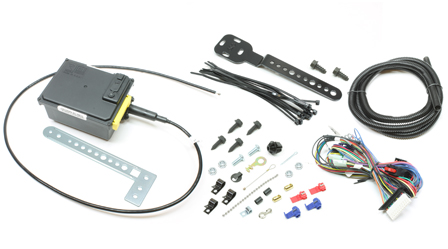
Click image to enlarge...
Installation Manuals

Universal Aftermarket Cruise Control Service Parts
Global Cruise Hardware
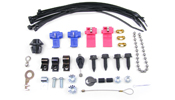
Cruise Control Module
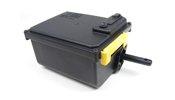
Cruise Harness Assembly
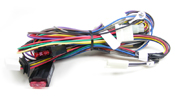
43" Cruise Cable Assembly
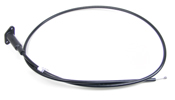
Cable Bracket Assembly
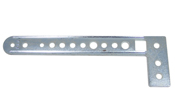
Global Cruise Accessories and Service Parts
Replacement Magnets, 10-pack
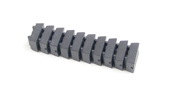
Magnet Package with Tie Strap
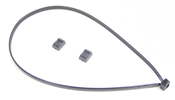
Replacement Clutch Switch
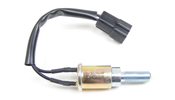
Reservoir (No longer available)
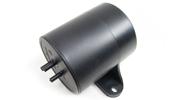
Speed Signal Generator
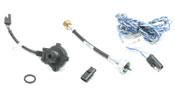
Form #59A-02361G
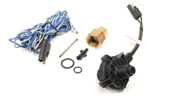
T-Bar Adaptor
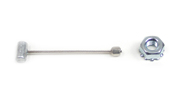
Clutch Disengagement Switch
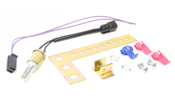
VSS Divider (Divide By 2)
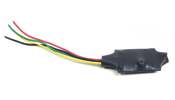
VSS Divider (Divide By 4)
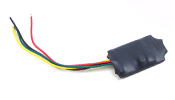
Relay Package
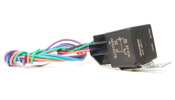
Frequently Asked Questions
Global cruise application.
Q: Can I install Rostra's Global Cruise system on a motorcycle or ATV?
A: At Rostra, we love seeing the inventive ways in which our customers apply products that we manufacture to a variety applications. But, while a number of online forums exist that detail the multitude of installation options for our products on non-passenger vehicle modes of transportation, due to safety concerns surrounding these installations, we do not actively support these applications. Our technical support is provided through extensive real-world testing that at this time does not include working with said vehicles.
Q: When installing Rostra's Global Cruise system, can I mount the cruise control servo motor to the vehicle's engine?
A: When selecting a mounting location for your Global Cruise servo motor, it is best to take into consideration the deteriorating effects heat and vibration have on all vehicle electronics. Because of the amount of heat generated by a vehicle's engine and exhaust manifolds, we recommend mounting the Global Cruise servo motor as far from these two as possible as heat and vibration damage to the motor can result in our standard 3-year/36,000 mile warranty being voided. For a list of places that we do not recommend, please see below:
- Underneath the vehicle's fender exposed to the elements
- Underneath the vehicle itself exposed to road debris
- Directly to the vehicle's engine with heat and vibration
- In any location with the cable points towards the ground
- Near sharp, hot, or moving objects (pulleys, CV shafts, etc...)
- Near the vehicle's ignition coil (no closer than 10" (255mm)
- Within the passenger compartment (see Q/A below)
- Where it will interfere with vehicle maintenance/service checks.
Q: Can I permanently mount Rostra's Global Cruise servo motor on the inside of my vehicle?
A: The short answer - Yes, this is a possibility. While mounting the Global Cruise servo motor within the passenger cabin is certainly an option, installers are warned that the motor itself makes a fair amount of noise as it pulls the vehicle's throttle back and forth to maintain highway speeds. While hot rod owners may never notice the sound of the motor, more modern vehicles that include ample sound dampening from road noise likely will.
Q: The throttle cable attached to Rostra's Global Cruise servo motor is too long for my application. Can I cut it?
A: No. Cutting the throttle cable attached to the Global Cruise servo motor due to its length is highly inadvisable as it can directly impact the throttle cable's ability to move freely into and out of the servo motor. Instead, the servo motor can be mounted in such a way that the cable can be looped to create a shorter distance. Please note that this loop must have greater than a 6-inch diameter.
Q: Do I need to connect the Dark Blue Tachometer (TACH) or Light Green Neutral Safety (NSS) wires from the Global Cruise system's main wiring harness for cruise control operation?
A: While neither the Tachometer Signal wire (for manual transmission vehicles) or Neutral Safety wire (for automatic transmission vehicles) need to be connected for cruise control operation, we highly advise that they are as they provide over-rev protection by disengaging the cruise control system in situations where the engine could be accidentally "knocked" into neutral while driving (NSS/automatic transmission), or when the clutch pedal is depressed (TACH/manual transmission).
Global Cruise Accessories
Q: My vehicle is not equipped with an electronic vehicle speed sensor (VSS). Can I still install Rostra's Global Cruise system?
A: Absolutely! The Global Cruise provides an incredibly dynamic way of controlling speed on vehicles equipped with a mechanically-operated throttle - whether or not they include a pre-existing and/or usable VSS. For vehicles that fall into this category, we manufacture a number of speed signal generators that tell our cruise control how fast your vehicle is moving so that it can effectively hold the speed for you. For Chrysler/Mopar and Chevrolet vehicles manufactured anywhere from the early 1950's to late 1980's (when electronic VSS became standard), we offer part number 250-4160 - a device that is installed between the transmission and speedometer cable to generate a usable speed signal. For vehicles where underbody space is an issue and the transmission rests closely to a crossmember or the vehicle's body, we also offer the same equipment with a speedometer cable extension as part number 250-4153 . For Ford and all other vehicle makes, we offer part number 250-4165 - a sensor that attaches to the vehicle's body and a package of magnets that attach to the vehicle's driveshaft or CV shaft. When the shaft spins and the magnet(s) pass by the sensor, a speed signal is generated.
Rostra cruise control systems are only validated on vehicles available in the United States and Canada.
For the best in driving experience, choose a cruise control from Rostra, the leader in cruise control technology. Contact us today for purchasing information.
Rostra is a leading manufacturer of automotive comfort, safety, and convenience accessories including electronic cruise control systems, vehicle speed limiters, backup camera relocation kits, LED lighting, exterior vehicle camera systems, automotive lumbar supports and seat heaters, driver alert systems, and more.
Rostra: 2351 J. Lawson Blvd. Orlando, FL, 32824
WHAT OUR CUSTOMERS SAY
" Just what I needed for my 1962 Thunderbird! Before installing this, I would get leg cramps holding the throttle constant while cruising, I swear the throttle return spring was originally a bed spring. Installed this beauty before taking my trip down RT 66 in 2015. Finally, 7500 miles in comfort! "
Jim H. - United States
250-1223 Universal Electronic Cruise Control
" This is great. It installed pretty easily. I put it on my F-350 so I can park easier since my front camera is obstructed my LED lights and a light bar. I easily installed the sensors in the air dam below the bumper. "
Schawn D. - United States
Forward-Facing Parking Sensor System
" This installed very easily. I highly recommend it for anyone who needs this feature to make their car seat more comfortable. But this does require a high level of car handy skills, as you need to significantly disassemble a car seat. "
Sam G. - United States
Universal Lumbar Support System
" I installed this in a 2018 RZR RS one. I ride in the winter and have only a windshield. I installed the seat heater and it keeps me very warm. "
Ron B. - United States
Universal Seat Heater
" Once installed, the Jeep is more noticeable as one would expect. This is a very good safety upgrade--I was surprised DRL's were not standard on Wranglers. I have had compliments from other Wrangler owners. "
Chessie T. - United States
Jeep Wrangler LED Fender DRL
Be the first to know about special promotions and product updates. Enter your email and subscribe to our newsletter.
© 2024 Rostra Accessories
- Vision Cross-Reference
- Privacy Policy
- About Rostra

- Forum Listing
- Marketplace
- Advanced Search
- Accessories, Care and Mods
- Maintenance and Service
LED Taillights cause cruise control to not work
- Add to quote
I just installed LED taillights (brake lights), and my cruise stopped working. Or it would work and cancel after 5 to 20 seconds. I replaced one brake light with a standard incandescent light, and the cruise went back to working. What I discovered is that LED taillights do not "pull" the 12v brake wire to ground as incandescent lamps do.... it has to do with LED's having a voltage drop of 1.2 volts. So this causes the brake line to "float" at 1.2v instead of being either at 12v or 0v. This "gray area" is enough to trick the cruise control into thinking you have hit the brakes. The solution is to make sure the brake line goes all the way to 0v when the brakes are not pressed. There are two ways to do this. Make sure that ONE of the brake lights is incandescent. The best looking (most symmetric) is the 3rd brake light. Another solution is what I did. Wire a 10k ohm resistor across the LED lamp for the 3rd brake light. I got my lamp from superbrightleds.com , and the plastic body has little holes in it. I was able to thread a 1/4watt 10kohm resistor into the body and simply bend the leads down just like the wires that were already on the lamp. Works like a champ. Best of all, I didn't have to splice the load resistors (which get very warm) into any of my wires. By the way, my flasher don't spend the money for the load resistors for LED turn signals, just install a heavy duty flasher. It won't speed up when the LED turn signal lamps are installed.
This would explain why I had my E back to the dealer six times to have the cruise repaired under warranty and they replaced everything from the steering wheel switch to the clutch switch to the ECU and it still doesn't work. I didn't realize the control unit watched the brake light circuit voltage so closely. Luckily I have two such resistors laying around from my previous car. I'll install one tonight and see what happens. If that resistor fixes my cruise control, I'll owe you one :grin:
quick test The quickest way to test this is to simply install ONE incandescent brake light. If your cruise suddenly starts working, you only need to install the 10k reisistor in ONE brake light. Since L/R/3rd brake lights are all in parallel, you only need one of them to pull the brake line to 0v. I chose the 3rd brake light because it's inside the cabin and only has two wires so there was no chance of getting brake and tail lights crossed up. What kills me about this is that all it would take is adding a 5cent resistor to the lamps at the factory. Sure that resistor might not do the trick in american cars where the brake and turn are combined, but it would work in all the foreign cars. Hope this helps.... if it does, I drink Amber Bock. Wes
ai4px said: I just installed LED taillights (brake lights), and my cruise stopped working. Or it would work and cancel after 5 to 20 seconds. I replaced one brake light with a standard incandescent light, and the cruise went back to working. What I discovered is that LED taillights do not "pull" the 12v brake wire to ground as incandescent lamps do.... it has to do with LED's having a voltage drop of 1.2 volts. So this causes the brake line to "float" at 1.2v instead of being either at 12v or 0v. This "gray area" is enough to trick the cruise control into thinking you have hit the brakes. The solution is to make sure the brake line goes all the way to 0v when the brakes are not pressed. There are two ways to do this. Make sure that ONE of the brake lights is incandescent. The best looking (most symmetric) is the 3rd brake light. Another solution is what I did. Wire a 10k ohm resistor across the LED lamp for the 3rd brake light. I got my lamp from superbrightleds.com , and the plastic body has little holes in it. I was able to thread a 1/4watt 10kohm resistor into the body and simply bend the leads down just like the wires that were already on the lamp. Works like a champ. Best of all, I didn't have to splice the load resistors (which get very warm) into any of my wires. By the way, my flasher don't spend the money for the load resistors for LED turn signals, just install a heavy duty flasher. It won't speed up when the LED turn signal lamps are installed. Click to expand...
- ?
- 88.3K members
Top Contributors this Month

Ram 1500 Cruise Control Not Working
The Ram 1500 is a popular pick-up truck known for its durability and reliability. However, like all vehicles, it can experience problems from time to time. One issue that Ram 1500 owners may encounter is that their cruise control is not working.
This can be a frustrating problem, as cruise control is a convenient and safe feature. In this blog post, we will discuss the causes, symptoms, and solutions for cruise control not working in the Ram 1500.
Truckguider Link Any Page
2015 Dodge Ram 1500 cruise control not working
Causes of the problem:
There are several common causes for cruise control not working in the Ram 1500. One of the most common is an issue with the brake pedal sensor. The brake pedal sensor is responsible for detecting when the brake pedal is pressed, and it sends this information to the cruise control module.
If the sensor is malfunctioning, the cruise control module may not receive the correct information and will not engage. Another common cause is an issue with the cruise control module itself.
The cruise control module is responsible for controlling the speed of the vehicle and engaging the cruise control. If the module is not working properly, the cruise control will not engage.
Symptoms of the problem:
There are several signs that the cruise control is not working properly in the Ram 1500. One of the most obvious symptoms is that the cruise control light on the dashboard will not come on when the cruise control is engaged.
Another symptom is that the cruise control will not engage at all, regardless of whether the light is on or off. If you experience these symptoms, it is likely that there is an issue with your cruise control system.
Solutions for ram 1500 cruise control not working:
If you are experiencing problems with your Ram 1500’s cruise control, there are several steps you can take to troubleshoot and resolve the issue. One of the first things you should check is the fuses. The cruise control system relies on several fuses to function properly, and if one of these fuses is blown,
The system will not work. Another step you can take is to reset the system. This can be done by disconnecting the battery for a few minutes and then reconnecting it.
If these steps do not resolve the issue, it is best to consult a mechanic. A professional mechanic will be able to diagnose and repair any problems with your Ram 1500’s cruise control system.
If you are experiencing problems with your Ram 1500’s cruise control, there are several steps you can take to troubleshoot and resolve the issue.
1: Check the fuses:
The cruise control system relies on several fuses to function properly, and if one of these fuses is blown, the system will not work. To check the fuses, locate the fuse box in your Ram 1500 and consult the owner’s manual to identify which fuses are related to the cruise control system.
Use a fuse tester or a multimeter to check if the fuses are good or not. If you find a blown fuse, replace it with a new one with the same amperage rating.
2: Reset the system:
Another step you can take is to reset the system. This can be done by disconnecting the battery for a few minutes and then reconnecting it. This will reset all the systems in the car including the cruise control.
Once the battery is reconnected, turn on the ignition and test the cruise control to see if the problem has been resolved.
3: Check the brake pedal sensor:
If the fuses are good and the system has been reset but the cruise control is still not working, check the brake pedal sensor. The brake pedal sensor is responsible for detecting when the brake pedal is pressed, and it sends this information to the cruise control module.
If the sensor is malfunctioning, the cruise control module may not receive the correct information and will not engage. To check the sensor, locate it behind the brake pedal. Inspect it for any damage or debris that may be preventing it from working properly. Clean it if necessary.
4: Check the cruise control module:
Another common cause is an issue with the cruise control module itself. The cruise control module is responsible for controlling the speed of the vehicle and engaging the cruise control. If the module is not working properly, the cruise control will not engage.
To check the cruise control module, consult the owner’s manual to locate it in the vehicle. Inspect it for any damage or corrosion. If it is damaged, it will need to be replaced.
5: Consult a mechanic:
If none of the above steps resolve the issue, it is best to consult a mechanic. A professional mechanic will be able to diagnose and repair any problems with your Ram 1500’s cruise control system. They will have the proper tools, equipment, and expertise to diagnose the problem and repair it correctly.
It’s important to note that these are general troubleshooting steps and the solution may vary depending on the specific problem. It’s always best to refer to the owner’s manual of the vehicle or consult a mechanic if you have doubts.
:max_bytes(150000):strip_icc()/Tempomat_Cruise_Control_IMG_20170712_182317674-5b7584fd46e0fb00506ad772.jpg)
What are the common causes of cruise control not working in the Ram 1500?
Common causes include issues with the brake pedal sensor or the cruise control module.
What are the symptoms of cruise control not working in the Ram 1500?
Symptoms include the cruise control light not coming on or the cruise control not engaging.
What should I do if my Ram 1500’s cruise control is not working?
First, check for fuses, reset the system and if the issue persists, consult a mechanic.
- Ram 1500 Service Airbag System
- Ram 1500 Light Bar behind Grill
- Ram 1500 Heated Seats Won’T Stay on
- Ram 1500 Dodge Engine Swap Compatibility Chart
- Ram 1500 Custom Rotary Shifter

Zohn Zayn Smith is a seasoned automotive enthusiast with over 15 years of experience in the industry. As the Founder and Chief Editor of Truckguider, he specializes in Dodge Ram models, including the Ram 1500 and Ram 2500. His deep understanding of these trucks makes him a trusted authority on everything from performance and maintenance to towing capabilities.
View all posts
Similar Posts
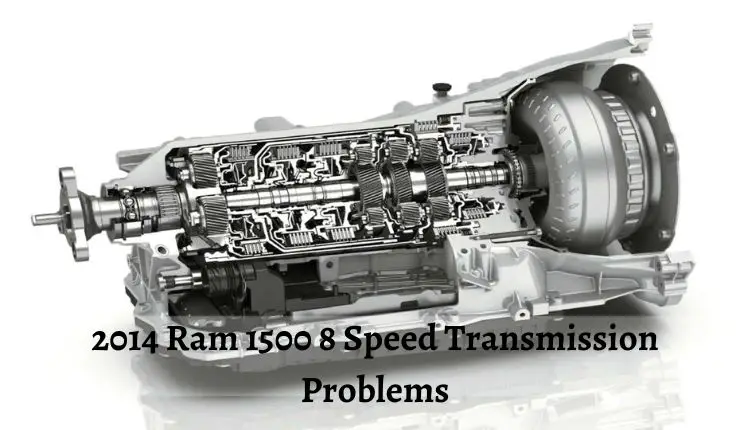
2014 Ram 1500 8 Speed Transmission Problems
The 2014 Ram 1500 equipped with an 8-speed transmission may experience a range of issues, including…
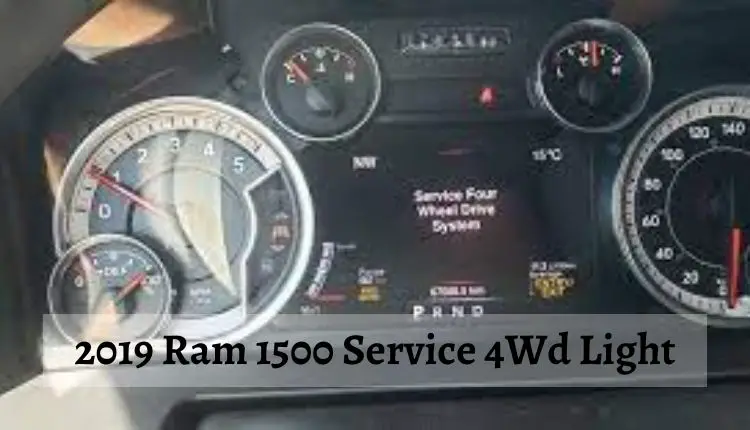
2019 Ram 1500 Service 4Wd Light
If your 2019 Ram 1500 is displaying a Service 4WD light, it is essential to address…
2016 Ram Dash Lights Stay on
Looking at your 2016 Ram 1500 and wondering why the dash lights stay on even when…
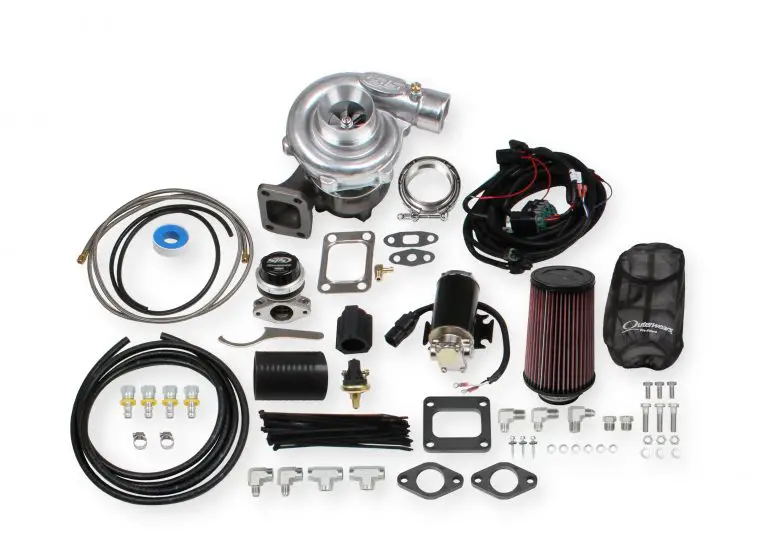
Sts Turbo Kit Ram 1500
The STS Turbo Kit for the Ram 1500 is one of the best kits available on…
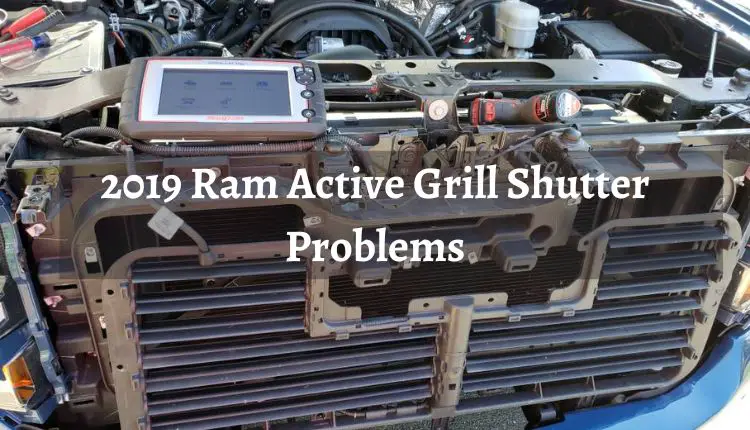
2019 Ram Active Grill Shutter Problems: Solve Now!
Are you dealing with frustrating issues related to your 2019 Ram’s Active Grill Shutters? You’re not…
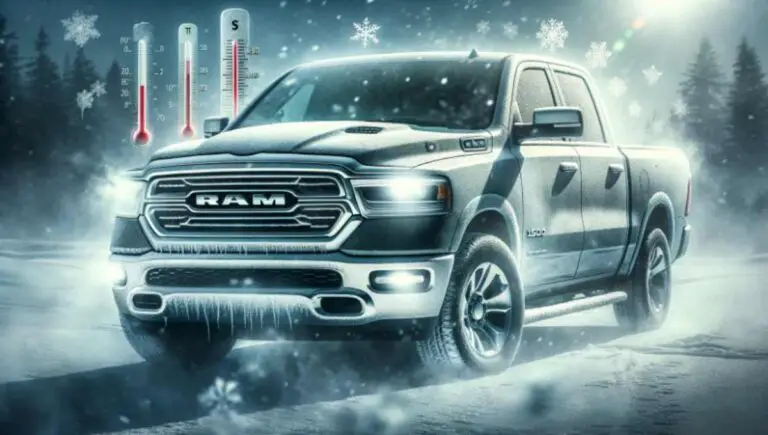
2014 Ram 1500 Heater Not Blowing Hot Air – Quick Solutions
Are you facing the chilly dilemma of your 2014 Ram 1500’s heater not blowing hot air?…
Leave a Reply Cancel reply
Your email address will not be published. Required fields are marked *
Save my name, email, and website in this browser for the next time I comment.
Log in or Sign up

- Search titles only
Separate names with a comma.
- Search this thread only
- Display results as threads
Useful Searches
- Recent Posts
You are using an out of date browser. It may not display this or other websites correctly. You should upgrade or use an alternative browser .
Welcome to Tacoma World!
- Participate in all Tacoma discussion topics
- Communicate privately with other Tacoma owners from around the world
- Post your own photos in our Members Gallery
- Access all special features of the site

Cruise control not working after install of aftermarket tail light assembly?
Discussion in ' 1st Gen. Tacomas (1995-2004) ' started by prerunnerSD , Jan 28, 2022 .
#1 prerunnerSD [OP] Well-Known Member
Is this something other people experience. I purchased these new after market "tail light assembly" from ebay . (china) for my 2001 Tacoma V6 4X4 W ondering if the internal wiring in these things could be wrong tho? Ever since I installed the new tail light cruise control only works when headlights are off? As soon as you turn on headlights, cruise control STOPS. Do you think this tail light assembly is the culprit? Should I return and get OEM? In a post located here , its been mentioned in the past "Most likely your tail light sockets or bulbs are corroded. Thus the tail lights are trying to ground through the brake light circuit which causes the cruise to see the brakes being applied so it will not engage physical damage to wires." Could this be the culprit? Everything seems new and not corroded. Could it be something else or are aftermarket tail lights known to do this? regards - prerunnersd
#2 wilcam47 Keep on keeping on!

Did you try the old ones see if CC works?
#3 unstpible Well-Known Member

I wonder if you got a set of taillights designed for the older models. Do you have a picture of the plug for the taillights
#4 Montana_Actual ;)
I had a FORD that did this when the 3rd brake light was out. Did you swap bulbs to LED's? But yes, if it's anything like the same setup it's because the truck is not detecting a bulb (on LED's the voltage is lower). So rather than just put an indicator light in the dash, some genius thought it'd be a great a idea to disable cruise control, lol. If you didn't upgrade to LED's retry the bulbs and put some dielectric grease in there with them. Make sure to clean off the connections thoroughly before doing so.
#5 prerunnerSD [OP] Well-Known Member
wilcam47 said: ↑ Did you try the old ones see if CC works? Click to expand...
#6 unstpible Well-Known Member
prerunnerSD [OP] said: ↑ Good idea, however old one is damaged because of an accident. Just asking to see if anyone has had this experience before. Seems like these aftermarket tail lights are a big hit online and dozens are sold a day. I would think maybe someone else had this experience. Click to expand...
#7 taylor555 Well-Known Member
Try disconnecting the ground on the battery. Then reconnect it. This happen to me years ago. And for some reason after I did this my cruise started working again. I'm not sure if the ECU was holding a soft code or what the deal was.
#8 Bivouac Well-Known Member
prerunnerSD [OP] initial post: ↑ Is this something other people experience. I purchased these new after market "tail light assembly" from ebay . (china) for my 2001 Tacoma V6 4X4 W ondering if the internal wiring in these things could be wrong tho? Ever since I installed the new tail light cruise control only works when headlights are off? As soon as you turn on headlights, cruise control STOPS. Do you think this tail light assembly is the culprit? Should I return and get OEM? In a post located here , its been mentioned in the past "Most likely your tail light sockets or bulbs are corroded. Thus the tail lights are trying to ground through the brake light circuit which causes the cruise to see the brakes being applied so it will not engage physical damage to wires." Could this be the culprit? Everything seems new and not corroded. Could it be something else or are aftermarket tail lights known to do this? regards - prerunnersd Click to expand...
#9 BlackSportD Well-Known Member

Montana_Actual said: ↑ I had a FORD that did this when the 3rd brake light was out. Did you swap bulbs to LED's? But yes, if it's anything like the same setup it's because the truck is not detecting a bulb (on LED's the voltage is lower). So rather than just put an indicator light in the dash, some genius thought it'd be a great a idea to disable cruise control, lol. Click to expand...
#10 Bob12321 Well-Known Member
Although them lights look good and new , its a crap shoot. Ive had problems with them working also . I just ordered another set then i had no more problems. Even buying 2 sets is way cheaper than oem
#11 aroma Well-Known Member
mine did the same thing, it was the bulb itself. Tiny short made the computer think the brake was being applied.
#12 prerunnerSD [OP] Well-Known Member
![aftermarket cruise control not working [IMG]](https://i.imgur.com/l09XYtd.jpg)
#13 0xDEADBEEF Trash Aficionado
prerunnerSD [OP] said: ↑ Tested the old tail lights and it still does it with that. Cruise control turns off when I turn on headlights. Also when head lights are off, pressing the brakes makes the dash light and even the clock lights dim while pressing. (see video) When I have the headlights on braking does not cause the dimming of the dash or clock lights and everything works normal. Recently I had a rear ending fender/bender and it caused some damage to my bumper and broke the lens of my left rear tail light. The bumper absorbed most of the accident. I have replaced it with a TYC brand after market tail light. When plugging in my old OEM tail light it still acts this way so I don't think the after market lights are bad. I don't remember if had this problem before the accident. Also prior to the fender bender I had this mod: done to my truck. Done by a buddy of mine. This does require taking apart the steering column. So maybe a wire was crossed or not put in right? Should I check anything else? Could the problem be anything in the rear besides the tail light assembly? Since I was hit back there maybe something isn't grounding. However the collision was not severe and original wires seem intact. Click to expand...
#14 prerunnerSD [OP] Well-Known Member
0xDEADBEEF said: ↑ Sounds like a loose ground somewhere. The circuit that cancels your cruise control is finding a ground through your lights, causing it to activate when your lights get energized. I think I’d check under your dash, iirc a bunch of grounds end up by the drivers foot behind the kick panel. Click to expand...
#15 0xDEADBEEF Trash Aficionado
prerunnerSD [OP] said: ↑ So even though my steering column was taken apart you don't think something could be miswired there? I remember my friend being very methodical though. Click to expand...
Attached Files:
01 tacoma wiring manual.pdf, #16 prerunnersd [op] well-known member.
Sorry I’m not an electrician I am not experienced with electrical manuals but at this point do you think this is more of a front end problem? could this be part damage because of the accident or is that unlikely? I was only hit in the rear I tested several tail light assemblies and they all function this way now with the cruise control not working with the headlights on.
Products Discussed in Entire Site Forum: 1st Gen. Tacomas (1995-2004)

- No, create an account now.
- Yes, my password is:
- Forgot your password?

- Upcoming Cars
- Popular Cars
- Latest Cars
- Electric Cars
- Latest News
- Press Release
- Compare Cars
- Variant Explained
- Review Videos
- Compare Videos
- Variants Explained Videos
- More Videos
- Auto Expo Videos
- V3Cars YouTube Channel
- Expert Review
- Comparison Review
- Features Explained
- User Review
- Car Loan EMI Calculator
- Fuel Cost Calculator
- Buy / Renew Car Insurance
- Fuel Price in India
- Apply for Car Loan
- Mileage Calculator
- Car On-Road Price
- Sell Used Car
Login to V3Cars
Sign Up to V3Cars
This is necessary to personalise results for you
OTP has been sent to
Select City
Cruise Control - Feature, Pros & Cons, Working Explained
- 27 January 2024
- By Nikil Jonathan
In this Feature Explained article, we’ll present the most detailed analysis of the cruise control feature in your car. We’ll list out the pros and cons of cruise control, explain how it works, provide the typical cost of getting the cruise control feature from the aftermarket and its repair and replacement costs. Based on this analysis, you can decide the importance of this feature for your car ownership experience.
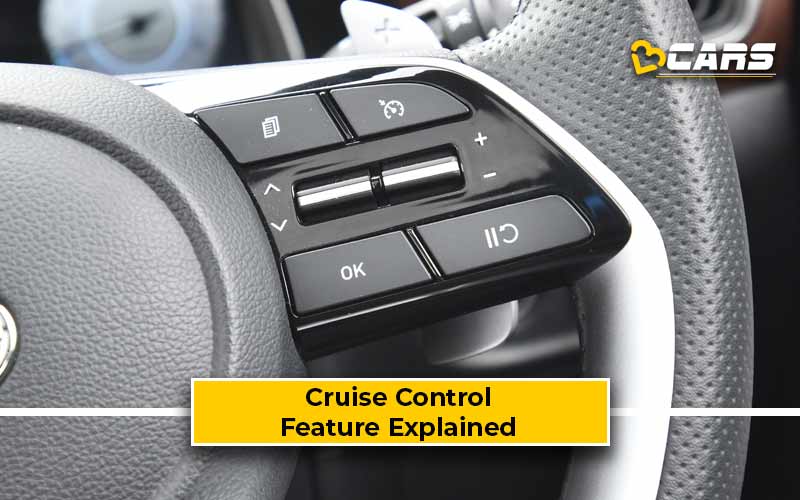
We have also included a list of affordable cars in India with cruise control to help you make informed purchasing decisions.
What Are The Pros And Cons Of Cruise Control?
Cruise control, the automotive equivalent of a rice cooker, can be a blessing on long highway drives. But like any powerful tool, it comes with its own set of challenges. Let's dive into the pros and cons of using cruise control to help you decide if it's the right fit for your driving style.
The pros or advantages of cruise control are:
- Effortless Speed: Say goodbye to constant foot adjustments! Cruise control maintains your desired speed, reducing fatigue and leg strain on long journeys. Think of it as an extended chai break for your feet.
- Fuel Efficiency Friend: Consistent speed translates to optimal fuel economy. Cruise control minimises unnecessary acceleration and braking, leading to potentially improved mileage.
- Highway Hero: On open roads with steady traffic flow, cruise control takes the edge off long drives. It can help you avoid unintentional speeding and keeps you relaxed, making the journey less stressful.
The cons or disadvantages of cruise control are:
- Drowsiness Danger: The hypnotic hum of constant speed can lull even the most alert driver into a false sense of security. Remember, cruise control doesn't replace the need for active engagement and vigilance.
- Road Reality Check: Cruise control isn't a one-size-fits-all solution. It struggles on winding roads, highways with varying speed limits, or unpredictable conditions. Be prepared to disengage quickly when the road throws you a curveball.
- Distraction Magnet: With your foot off the throttle, it's tempting to multitask or zone out. Remember, you're still the captain of the ship! Stay focused on the road and keep your eyes peeled for potential hazards.
Remember: Cruise control is a tool, not a magic spell. Use it responsibly, stay alert, and be prepared to take the wheel when needed.
What Is Cruise Control?
Forget aching legs and a leaden foot! Cruise control is your saviour on long highway journeys, taking over the tedious job of maintaining speed and letting you relax behind the wheel. Here's how to turn this helpful feature into your highway driving ally:
1. Autopilot Engaged: Ditch the constant pedalling. Cruise control lets you set a desired speed, then handles the throttle input, keeping you cruising effortlessly.
2. Safety First: Cruise control isn't autopilot! Cruise control disengages when you tap the brake, ensuring you're always in control. Just remember to manually reactivate it if you want to pick up the pace again.
3. Fine-Tuning Your Cruise: Feeling a little fast or slow? The "+" and "-" buttons are your speed adjustment tools. Need a quick burst to pass? Simply press the accelerator, and cruise control temporarily suspends itself.
4. Weather Wise: While cruise control is perfect for smooth highways, remember it's not your all-weather companion. Heavy rain, low visibility, or unpredictable conditions are best tackled with good old-fashioned manual driving.
5. Know Your Controls: Before hitting the road, familiarise yourself with your car's specific cruise control buttons. Consult your owner's manual to avoid fumbling while driving.
Cruise control isn't just for long hauls anymore. It's your highway driving hero, reducing fatigue, improving fuel efficiency, and letting you enjoy the journey.
How Does Cruise Control Work?
Modern cars that ply our roads today have drive-by-wire accelerators. This means that our inputs on the accelerator pedal only provide an electrical signal to the car's on-board computers. These clever conductors then interpret your signal, determining the ideal fuel-air mixture to reach your desired speed.
Now, enter cruise control. In a car equipped with this feature, the computers store this "desired speed" as their baseline. They continuously monitor your actual speed using sensors on the wheels. Any deviation up or down triggers a micro-adjustment in the fuel-air mixture, gently nudging the car back to accelerate or decelerate as required.
How Expensive Is It To Repair Or Replace Cruise Control?
The cruise control feature does not typically fail as this is a software-based feature. At best, the only costs associated with maintaining the cruise control feature in your car is if you have somehow managed to break the cruise control stalk or the buttons on the steering wheel that lets you activate this feature. In such instances, you will need to replace the switchgear, which could cost you up to Rs. 15,000 - Rs. 20,000.
Ultimately, the cost of repairing or replacing cruise control can vary widely depending on several factors, including:
- The extent of the problem: Is it a minor issue like a faulty switch or a major malfunction of the control module? More complex repairs will naturally be more expensive.
- Your car's make and model: Different car models have different cruise control systems and parts, with some being more costly than others.
- Labour costs: The location and rates of the repair shop you choose will affect the labour cost involved.
- Whether you choose original parts or aftermarket replacements: Generally, original parts are more expensive than aftermarket options, but they may also be of higher quality and offer better compatibility.
Here are some tips for minimising the cost:
- Get a diagnosis: Before committing to any repairs, have a qualified mechanic diagnose the problem to determine the exact cause and the associated cost.
- Shop around: Compare prices from different repair shops to find the best deal.
- Consider aftermarket parts: For minor repairs, using high-quality aftermarket parts can be a more affordable option.
- Check your warranty: Some car warranties may cover cruise control repairs or replacements.
What Is The Cost Of Aftermarket Cruise Control?
Adding aftermarket cruise control might seem tempting, but consider the pitfalls before installing an aftermarket kit. Here's why factory-fitted cruise control is the smoother and safer route:
1. Installation: Installing aftermarket cruise control, especially in cars without existing variants featuring it, can be a technical challenge. Incompatible parts, complex wiring, and modifications to the steering wheel or steering column can lead to frustration and potential malfunctions.
2. Safety First, Always: Cruise control manages your car's speed, making its performance critical. Opting for an aftermarket solution introduces potential risks as compatibility and quality might not match manufacturer standards, jeopardising your safety and vehicle stability.
3. Warranty Woes: Installing aftermarket cruise control often voids your car's manufacturer warranty. That means any issues arising from the add-on become your responsibility, potentially leading to costly repairs.
4. Factory Finesse: Choosing a car with factory-installed cruise control offers peace of mind. These systems are seamlessly integrated with your car's electronics, ensuring optimal performance, compatibility, and most importantly, safety.
How Easy Or Complex Is It To Install Cruise Control?
The cruise control feature comes fitted from the factory. It is nearly impossible to add this feature once you have bought a car that does not have cruise control. However, if you have broken the controls to this feature, replacing the cruise control stalks or the steering wheel switchgear could take between 3-5 hours depending on the proficiency of the mechanic working on your car. We recommend carrying out such repairs at authorised service centres only.
What Are Some Affordable Cars In India With Cruise Control?
Here are the cars and their variants priced under Rs. 10.0 lakh that offer cruise control in India:
- Hyundai Grand i10 Nios Sportz
- Tata Punch Accomplished
- Hyundai Aura SX
- Tata Altroz XT
- Hyundai Exter SX
- Maruti Suzuki Swift ZXI Plus
- Hyundai i20 Sportz
- Nissan Magnite XV Premium
- Honda Amaze VX
- Maruti Suzuki Dzire SXI
- Maruti Suzuki Baleno Alpha
- Toyota Glanza V
- Maruti Suzuki Ciaz Delta
- Hyundai i20 N Line N6
- Renault Kiger RXZ
Note : Check your car’s fuel cost with Fuel Cost Calculator in India
Verdict - Should I Get Cruise Control From The Aftermarket?
The cruise control feature is nearly impossible to install from the aftermarket if none of the variants of your car have this feature. Even if you find a workshop willing to take up this job, be warned that this will be installed using aftermarket kits that aren’t tested or calibrated by your car’s manufacturer. Hence, we recommend spending a bit more and buying the variant that offers this feature. Cruise control is especially useful for car owners who frequently drive on the highways. However, if you mostly drive within the city, then you can skip this feature altogether.
Note: Check your Car EMI with our - Car Loan EMI Calculator
ABOUT THE AUTHOR

Nikil Jonathan
Nikil's a huge fan of classic cars, especially Italian beauties such as the Alfa Romeo Giulia Sprint and the Iso Grifo. His love for cars and bikes originated when he first laid his eyes on a poster of the Ferrari F40 and the MV Agusta F4 when he was just a child. He also loves all things analogue, especially vintage cameras and turntables.
Maruti brezza zdi cruise installation
Balino 2016 automatic Give me price cruse control
Leave a Reply
Post Comment
Get updates and price details of on launch:

Yamaha FJR1300 Cruise Control (With Operating Instructions)
The Yamaha FJR1300 is a popular touring motorcycle known for its comfortable ride and advanced features like cruise control.
This article provides an in-depth look at the FJR1300’s cruise control system, including how it works, tips for safe usage, operating instructions, comparisons to other bikes, and troubleshooting of common issues.
We’ll cover everything from the basics of this useful feature to recalls related to cruise control problems.
Table of Contents
Does Yamaha FJR have cruise control?
The Yamaha FJR1300 touring motorcycle comes equipped with an advanced electronic cruise control system designed to maintain a steady preset riding speed.
This allows riders to relax their throttle hand while still maintaining a constant speed.
The FJR1300’s cruise control uses electronic throttle control to regulate engine power and keep the bike at the desired speed.
Cruise control in the FJR works till a speed of 100 mph. This is a safety feature to prevent abuse.
The system monitors wheel speed, throttle position, incline changes, and other data to smoothly control acceleration and deceleration.
It can increase or decrease speed in small 1mph increments by tapping the control switches.
The cruise deactivates automatically if the wheels lose traction, the bike stalls, or detection systems indicate a loss of control.
What year did the FJR1300 get cruise control?
2013 and later models have cruise control as standard.
Both the FJR1300ES and FJR1300A models had the cruise control feature.
Tips for Using Cruise Control Safely on the FJR1300
Cruise control is meant for long stretches of steady highway riding.
Avoid activating it in dense traffic, poor visibility, rough roads, or slippery conditions.
Be prepared to grab the brakes or disengage.
Set your speed in a lower gear first before shifting up. Make small incremental speed changes.
Resist using the resume function without verifying the previous set speed is appropriate.
Don’t rely on cruise as an alternative for staying alert and in control of your motorcycle. Static hand positions can cause cramps.
Continue scanning ahead and actively riding – override cruise whenever needed.
Operating Instructions for the FJR1300’s Cruise Control
To activate: Flip the power switch on the left handlebar to turn on the system. The indicator light will illuminate.
Accelerate to the desired steady speed, then push and release the “ SET- ” switch to set.
The “ SET ” light will come on showing cruise is engaged.
To Adjust: Tap “ RES+ ” to increase the set speed or “ SET- ” to decrease it.
Holding them down will change speeds continuously.
You can also temporarily override by twisting the throttle, then tap “ SET- ” to return to the previous set speed.
To Deactivate: Cruise disengages when braking, downshifting, or using the clutch or throttle override.
The system power switch turns the cruise fully off. The indicator lights help show the current status.
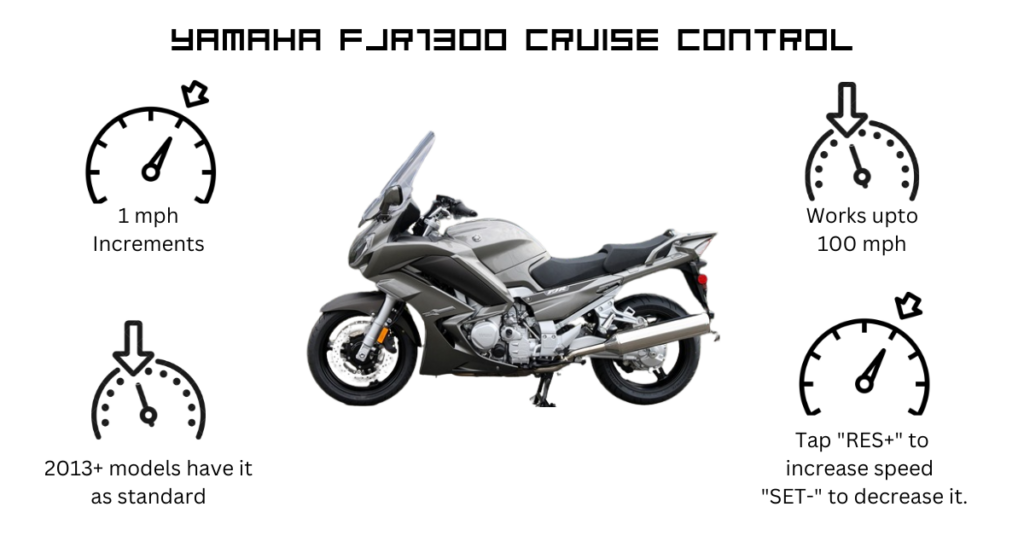
Comparisons
The Honda ST1300 doesn’t have a cruise control system at all. The riders are known to install aftermarket systems on their motorcycles.
BMW R1200RT had the cruise control as standard from 2005. The motorcycle had servo-assisted brakes till 2007.
Aftermarket Cruise Control
McCruise sells servo cruise control kits for the FJR1300. They even help you install the system on
- Performance varies depending on the model year – Systems work down to 20mph on 2006-2007 models but speed wanders at the low end. Later models control full speed range better.
- The aftermarket system is specifically designed for 2006-2013 FJR1300 models. 2006-2007 bikes need custom software tuning due to difficulty controlling speeds.
- Owners must provide the exact build month & year when ordering for proper software calibration.
- Installation manuals & instructions for different mounting options can be found on the provider’s website.
- The control servo usually mounts behind passenger footrests. Alternate under-seat mounting only fits manual shift FJR1300s, not YCCS electric shift versions.
FJR1300 Cruise Control not working
Yamaha has issued a recall for over 18,000 motorcycles across 7 models, including the FJR1300, due to a faulty brake light switch.
The fault is caused by increased internal resistance in the front brake light switch, resulting from silicon oxide buildup.
Faulty switches can cause issues like:
- Brake lights staying on constantly
- Cruise control staying activated
- Difficulty activating/deactivating brake lights and cruise control
- Unexpected cruise control deactivation
These issues pose a safety concern for riders, prompting Yamaha to initiate a recall.
Owners of affected models are advised not to operate their motorcycles until the brake light switch has been replaced and the issue corrected.
In summary, the Yamaha FJR1300 comes equipped with an advanced electronic cruise control system designed to maintain steady highway speeds during long rides.
When used properly, cruise control can reduce fatigue and allow riders to fully take in the scenery.
However, it’s critical to continue scanning the road ahead and override the system whenever needed.
Yamaha has issued recalls related to cruise control defects, so make sure to have any issues promptly addressed.
Ride safe and enjoy the miles ahead.
Leave a Comment Cancel Reply
Your email address will not be published. Required fields are marked *
Save my name, email, and website in this browser for the next time I comment.

- Forum Listing
- Marketplace
- Advanced Search
- Nissan Frontier Community
- General Discussion - Frontier Related
Cruise Control Stopped Working
- Add to quote
I have a 2002 4 Cyl Extra Cab with about 73,500 miles. I have been using the Cruise Control regularly. I didn't know that there was suppose to be a light on the dash when it is on because I never saw one. I bought the truck used. In the last couple days, I tried to use my Cruise Control and it would not work. What I have done: 1) Checked the fuses. 5,11,12 and 22 I know they can affect the way it works but I checked them all and I don't have a burned out fuse. 2) Had Advance Auto check for any codes - there are no codes that show up. Because I have never seen a light, I sense that the Cruise Control is not getting turned on when I try using it. What steps do I need to take to troubleshoot this problem? Thank for your help.
Just a thought here....could this be an aftermarket cruise control that was not made by Nissan? I had an aftermarket cruise control put on my '08 Frontier and it too does not have a dashboard light. Mine is still working but I only have about 13,000 miles on my truck. If it is an after market cruise control I would look for some auto electronics shop in your area that would be able to fix it (if you don't know who originally might have put it in the truck). Just a suggestion. Have a good day.
it doesnt take a blown fuse for a fuse to go bad you know.
It is not a aftermarket cruise control. I will try different fuses in the 4 places that effect CC.
My Cruise Control is working. I discovered a vacuum hose that was loose. As soon as I reconnected it, the cruise control started to work. Thanks for the suggestions.
If the vacuum hose fix doesn't work for others, the other thing to check is the switch behind the clutch pedal. Readjusting it fixed this problem for me.
This may be irrelevant... but when the valve body started to stop working on my auto trans in my 05 nismo... cruise would cease to work just before I could actually tell there was really anything wrong with my transmission. Because speeds were varying very slightly because 4th and 5th gear weren't engaging completely, cruise would cancel itself just after setting the speed.
- ?
- 113.9K members
Top Contributors this Month

- Forum Listing
- Marketplace
- Advanced Search
- Toyota Truck, SUV and Van Forums
- T-100 Forum
T100 Cruise Control ... Help!
- Add to quote
:hammer:I've been searching for help for my 98 T100 cruise control without success. Here's the deal: I turn the factory cruise control on, the green "cruise" light on the dashboard lights up, and that is it! No blinking takes place, just a steady green light and no action at all. So, apparently the fuse to the cruise control works. Under the hood, the cable to the thottle looks okay. This system seems to be all electric as there aren't any vaccuum lines attached to it. I can't spend big bucks on this item. Does anyone have suggestions on how to get this working? If not, what aftermarket cruise control is reccomended? I will appreciate any help. Thanks!
Hey Guys, Am I the only one with a '98 T100 Cruise Control that does not work? If not, how did you have yours repaired? Thanks, MoTown
Unfortunately I don’t have any data on this car. The system does incorporate various switches for the brake, idle, clutch, cruise control motor, etc. If a switch were to fail, etc, it might prevent the system from engaging. Stop lights work OK? The fuses the system uses may be Gauge, Stop and ECU-1G. But guessing if any of these were blown other systems would not be working. If you can get your hands on a shop manual, even one for another Toyota model of about the same year you might be able to diagnose the system. The link below is for a Camry, might help. http://d01.megashares.com/?d01=59c0c91
cruise control issue... Thank you toyomoho for your kind assistance. I will study the link you provided me. I have looked at the usual items, i.e. fuses and cables. Not sure I have the expertise to check the emergency brake and brake associated switches. With good data I believe I can. The "cruise" dash light does light up, but that is the only part of it that works. Thanks again for trying to help me.
My guess is a switch, might check the stop light switch. This appears to have two circuits (double pole, double throw). One for brake lights, etc, one that goes directly to the cruise control motor. Also look at the Cig and all the ECU fuses.
cruise control I have a 96 T-100. When my cruise control went out, it was the clutch bracket. The clutch bracket (located under the steering column) begins to wear and crack where the clutch cable comes through, causing play in the clutch cable. Because of this, your cruise control sensor does not engage properly. If not repaired, your firewall wil eventually crack from excess pressure. A new clutch bracket costs about $85. It took me 2.5 hrs to replace in my driveway - only because of cramped working area. hope this helps. . .
Cruise Control would be nice, if it worked! rangechicken , thanks for trying to help me. My truck is an automatic, and I am still at a loss as to why the cruise control doesn't work. Wish it did, bud I can't afford to spend a lot of moolah on the cruise. So, I'm kind of resolved to live without it. That is the only part that does not work on this superb truck. It's my daily ride and weekend workhorse. The T100's are great trucks! :thumbup: "We are standing on giants".
my cruise has the exact same problem. Anyone know how to fix it?
I have a 97 T100 with the exact same cruise control issue. Criuse light comes on when the system is engaged, however no actual "cruise control". Any help would be greatly appreciated...
I have a 95 T100 the cruise works but the truck surges. Any thoughts
The cable is binding or the throttle body is sticking, maybe? How the truck drive when the cruise is not engage? N.E.O.
I haven,t used the cruise for a long time because of the surging. I checked the cable before and found no problems. On Monday , the truck started surging while driving without the cruise. It did it about 4-5 times and didn't do it anymore. The next day it did it again. This time the check engine light came on and stayed on. The truck was running really rough. I continued to drive it for the day because of work. The check engine light went off and the truck ran fine for awhile. It again surged and the check engine light was flashing on and off. It then stayed on and the truck is running rough again. I have not had chance to take it any where to get the code checked
If the CEL is flashing, it means the ECU is detecting a engine problem which has the potential of damaging the Cat. Pull the code to find out which cylinder is misfiring. When you check the cables, did you disconnected them from both ends? Engine problem can affect the cruise control operation. Toyota cruise control never have much problem with surging, so the engine running problem might have affected its operation. N.E.O.
The cel is now staying on steady. I will pull the code this weekend. I did not disconnect the cables. I will also do that this weekend. I have about 30,000 on my rebuilt motor. The truck has 263,000 on it. The cruise did the surging when I first bought it with 230,000. Thanks for the info N.O.E. I will let you know what I find out. If you think of anything else pass it on.
I had the code pulled today and it was P0301 cylinder 1 misfire. I also checked the cables for the cruise, no problems with them.
Probably either a spark plug or fuel injector or a mechanical problem. Since the coil also fires another cylinder, so it may be fine; however, might not be a bad idea to switch the coil and plug with another cylinder to narrow down the possibles. N.E.O.
I will do the switch tonight and see what happens tomorrow. If the injector needs to be replaced do I need to do them all. I know they were not replaced when the engine was rebuilt.
You can replace one injector at a time; however, it would be a good idea to replace the seals of the other two injectors and the washers for the fuel rail. N.E.O.
Ok, my next question- where is a good place to purchase them? Do you have a guess of what one cost? Can I get the code from my truck doing the paper clip trick?
As far as I know injectors are usually a dealer item, sometimes you might find rebuilt ones online; however, I am not sure who would have them. You have an OBDII system on the truck, so you need to have a scan tool to pull the codes; check with parts stores in your area, some of them might pull the codes for you for free. N.E.O.
I will do and keep you posted. Thanks
Well I switched the plug and a coil pack today. Took it for a spin to see if I could get the cel to come on and the truck to start missing so I could check it. I'm going to pick the truck up with a trailer because I blew a head gasket. Lots of white smoke. The snow ball is getting bigger.
Search results for query: crusie control kit
Universal add-on electronic cruise control system by Rostra
- ?
- 590.7K members
Top Contributors this Month

IMAGES
VIDEO
COMMENTS
It can also be caused by issues with the throttle control system or the ABS. In older cruise control systems, it can be caused by a broken vacuum line. Here is a more detailed list of the possible reasons your cruise control is not working: 1. Blown Fuse. All electrical systems in the vehicle are controlled by fuses.
H2Out. 2 posts · Joined 2012. #7 · Dec 30, 2012. i had the exact issue with no cruise control after installing aftermarket radio. I found the wiring diagram and saw that the green/white wire controls the auto volume adjust for the old radio which the new radio does not have. I pulled out the new radio and left the green/white wire ...
Check the fuse. You may need to look in the owner's manual to see which one if it's not tagged on the fuse box cover. An aftermarket cruise may have an inline fuse holder in the wiring to the ...
Locate the cruise control wiring harness in your vehicle. It is typically located under the steering column or in the engine bay. 2. Disconnect the battery negative terminal to prevent any electrical shorts. 3. Follow the instructions in the aftermarket cruise control kit to install the new cruise control system. 4.
Reason #2. Burnt brake lamp. Some cruise control systems are disabled when the brake lamp is blown. Check your brake lights. If you find a burnt brake light, just replace it and test the system again. Reason #3. Defective brake light switch. A defective pedal switch can also make your cruise control stop working.
Cruise control not working in your vehicle? Today we're going over three main components of the cruise control system - The Cruise Control Main Switch, Cruse...
Verify that the cable is not binding on anything under the hood. Aftermarket cruise control kits can also accommodate newer engines that drive by wire—and don't have an old-school cable to control engine RPMs. Actuator: The actuator is a mechanical box that controls your car's cruising function.
7) Loose or Broken Cruise Control Cable. Older vehicles that are equipped with cruise control have two throttle cables - one for the gas pedal and one for the cruise control system. These cables may stretch over time. If the cruise control cable has stretched or is broken, the cruise control system will not be able to operate the throttle ...
Brake Lights - In some systems, cruise control is disabled when a brake light is blown. Aftermarket lighting, such as LED brake light conversion, might trick the CCM into thinking a brake light is blown, as LED bulbs draw less current than incandescent bulbs. Fuses and Relays - On some vehicles, fuses and relays are used to protect the ...
Additionally, issues with the speed sensors will also trigger a check engine light or ABS warning light on your car's dashboard. 3. Faulty Brake Pedal Switch. Usually, having a faulty brake pedal switch is the main reason why your cruise control would stop working.
These include problems starting your car, a dead battery or alternator, dim headlights or brake lights, and blown fuses. There are also some other, less likely potential problems that would cause the cruise control to stop working.A lot of vehicles have the cruise control switch mounted on the steering wheel. The steering wheel can rotate with ...
Offering factory upgrade cruise control kits for many vehicles as well as aftermarket cruise control kits for 99% of all domestic and Japanese/Korean models. Everything on our site is in stock and in most cases, will ship the same day or within one business day. Our sales associates are technicians as well, so you can rest assured that you're ...
Here's a quick look at the steps to install an aftermarket cruise control in a car: Program the actuator and install it in a safe location in the vehicle. Measure the throttle travel and mark the distance from the starting and finishing points. Set the pulley segment to its open throttle position. Slide the barrel cable through the appropriate ...
Faulty brake light switch (sometimes integrated with the cruise control switch) Faulty 'cork spring' or 'spiral cable' - as mentioned this connects the steering wheel controls to the car's computer. There are many reasons why your car's cruise control system is not working, including brake light switch faults; worn out control ...
Multiple control switch options! Rostra's cruise control switches have been designed with the highest level of quality and have been tested and validated for use with the 250-1223 universal cruise control system. Please note that we do not recommend using any other brand of cruise control switch with a Rostra Global Cruise system as doing so may result in unintended cruise control operation ...
Let me explain the steps below: STEP 1- Locate the Fuse Box: Consult your vehicle's manual to find the fuse box's exact location. Commonly, it's positioned near the engine compartment. STEP 2- Identify the Cruise Control Fuse: Refer to the fuse diagram usually printed inside the fuse box cover.
This "gray area" is enough to trick the cruise control into thinking you have hit the brakes. The solution is to make sure the brake line goes all the way to 0v when the brakes are not pressed. There are two ways to do this. Make sure that ONE of the brake lights is incandescent.
1: Check the fuses: The cruise control system relies on several fuses to function properly, and if one of these fuses is blown, the system will not work. To check the fuses, locate the fuse box in your Ram 1500 and consult the owner's manual to identify which fuses are related to the cruise control system. Use a fuse tester or a multimeter to ...
The cruise control computer sees the brake light circuit energized and disengages. It also might be the headlights are grounding back through the brake light circuit causing the same problem. This can happen in the tail light sockets or the evil converter box . Good luck.
The pros or advantages of cruise control are: Effortless Speed: Say goodbye to constant foot adjustments! Cruise control maintains your desired speed, reducing fatigue and leg strain on long journeys. Think of it as an extended chai break for your feet. Fuel Efficiency Friend: Consistent speed translates to optimal fuel economy.
Aftermarket Cruise Control. McCruise sells servo cruise control kits for the FJR1300. They even help you install the system on . ... FJR1300 Cruise Control not working. Yamaha has issued a recall for over 18,000 motorcycles across 7 models, including the FJR1300, due to a faulty brake light switch.
I had an aftermarket cruise control put on my '08 Frontier and it too does not have a dashboard light. Mine is still working but I only have about 13,000 miles on my truck. If it is an after market cruise control I would look for some auto electronics shop in your area that would be able to fix it (if you don't know who originally might have ...
65 posts · Joined 2007. #1 · Feb 26, 2007. :hammer:I've been searching for help for my 98 T100 cruise control without success. Here's the deal: I turn the factory cruise control on, the green "cruise" light on the dashboard lights up, and that is it! No blinking takes place, just a steady green light and no action at all.